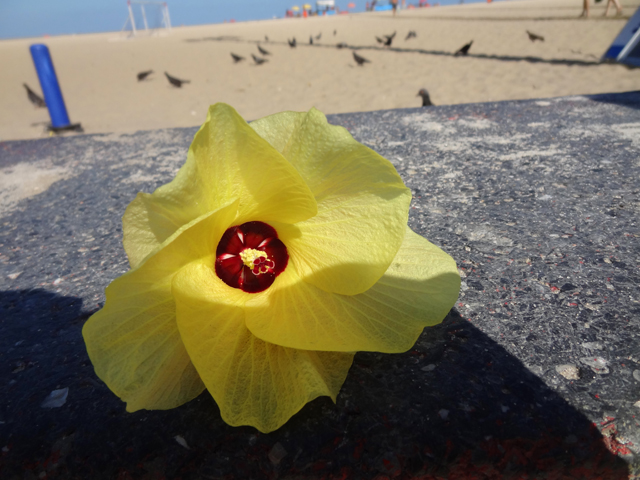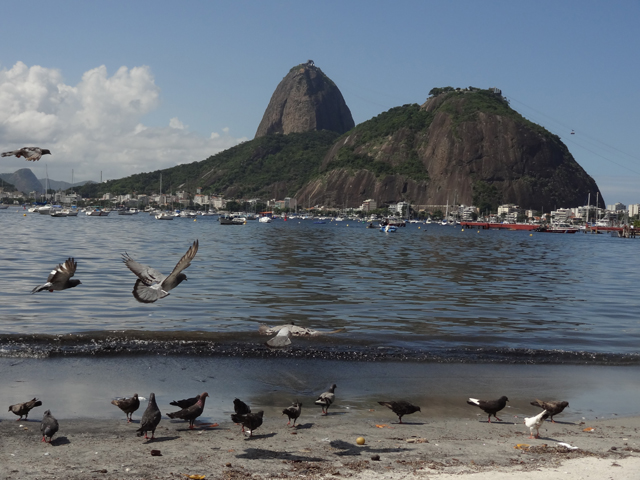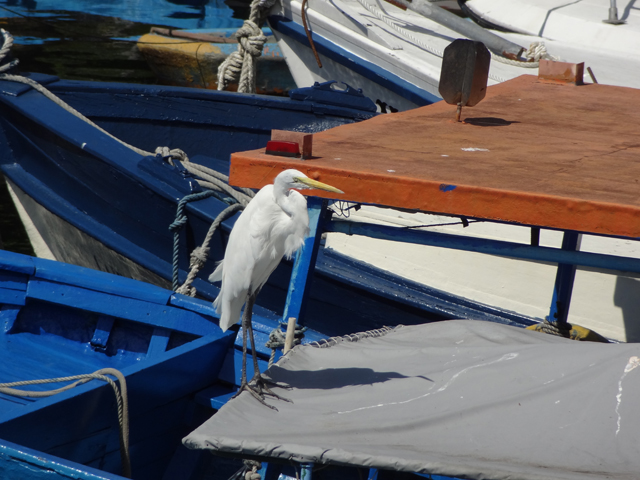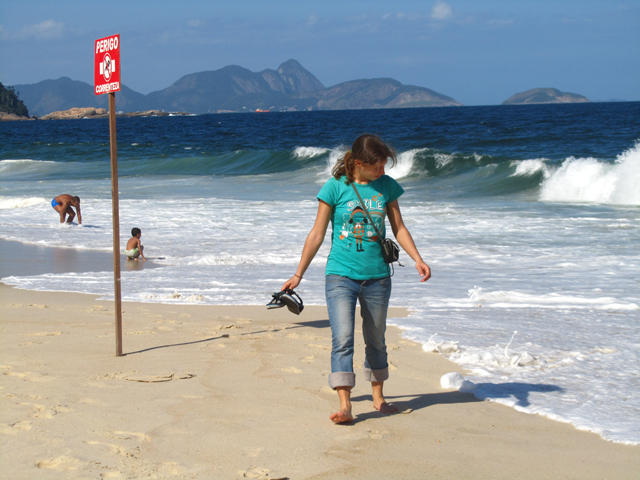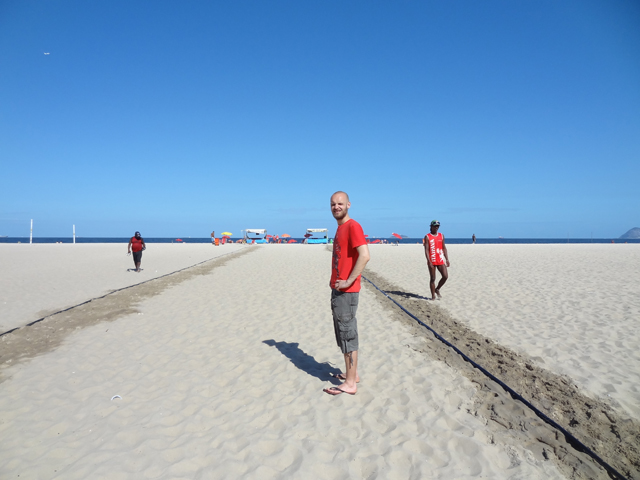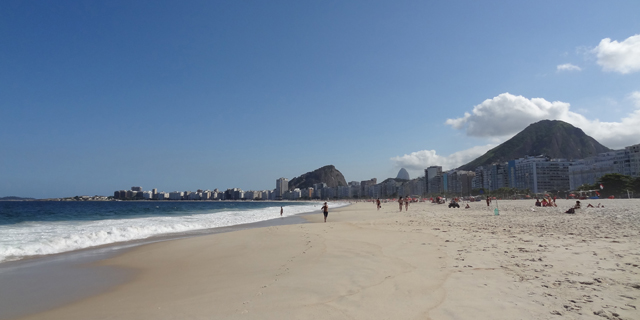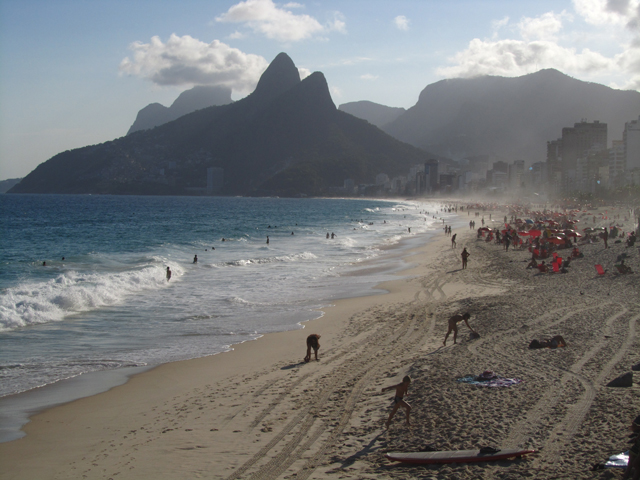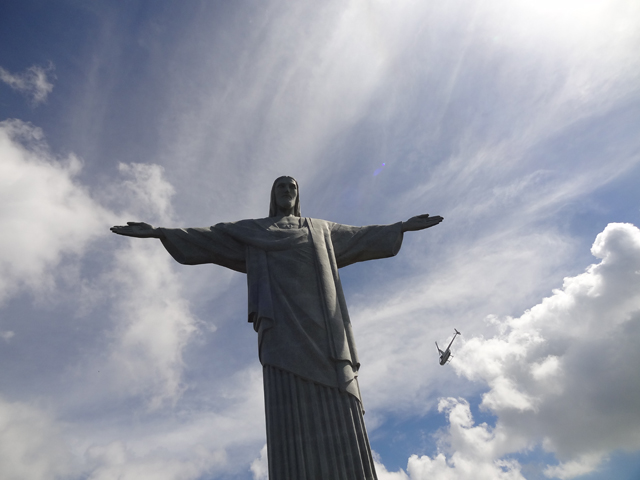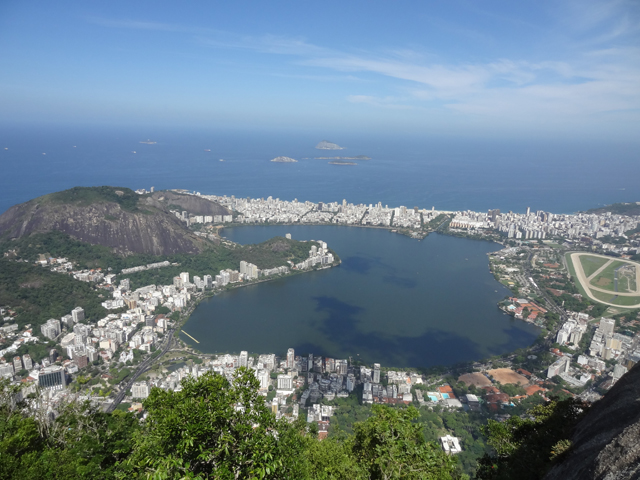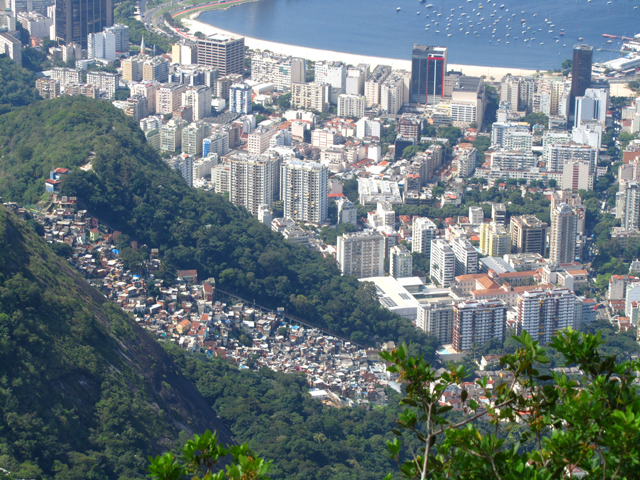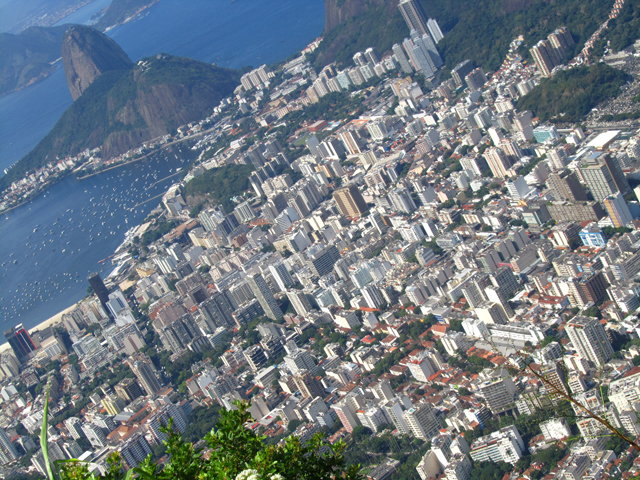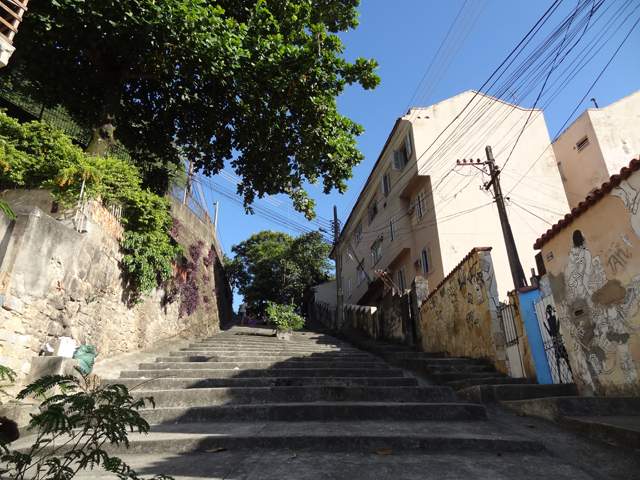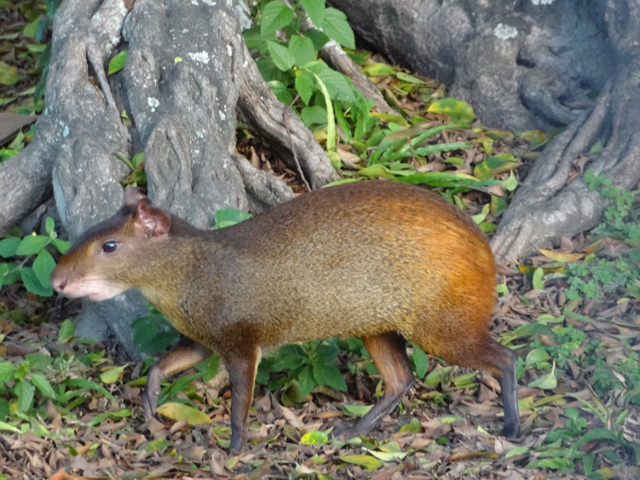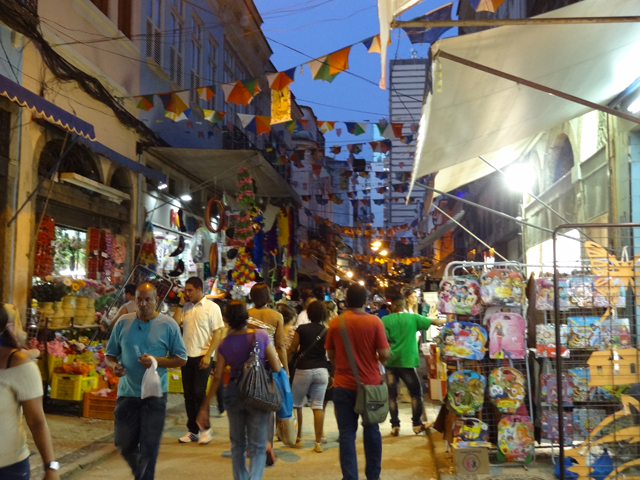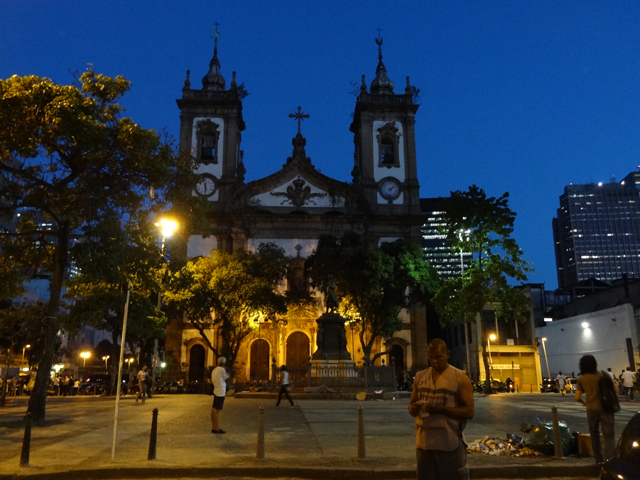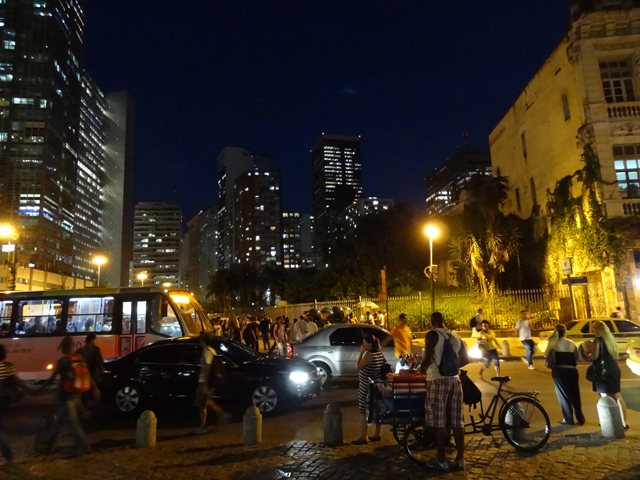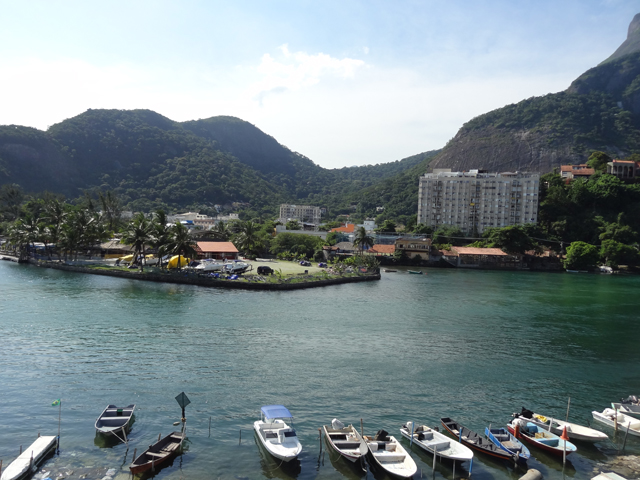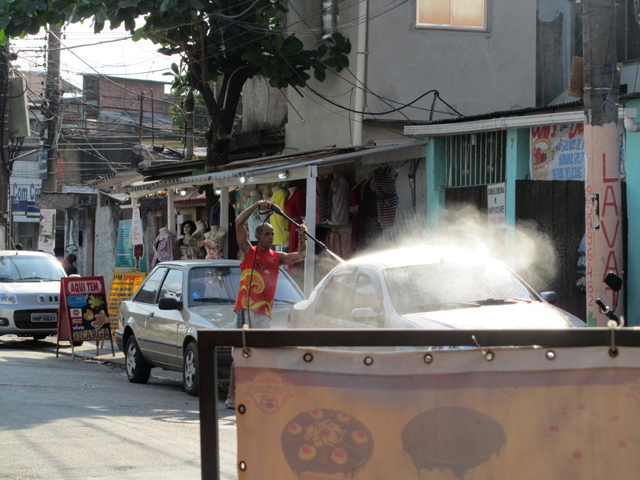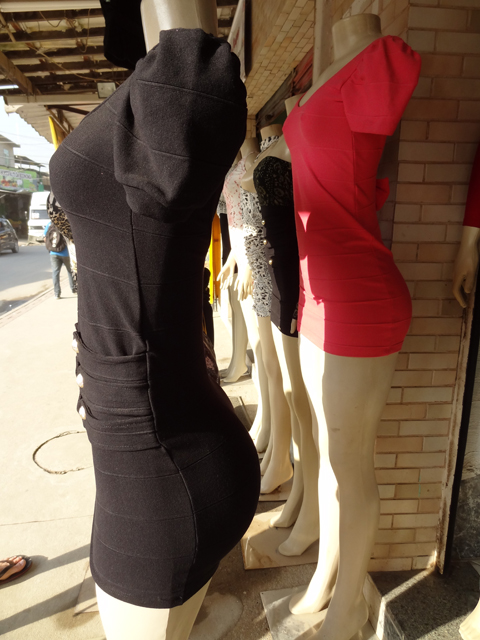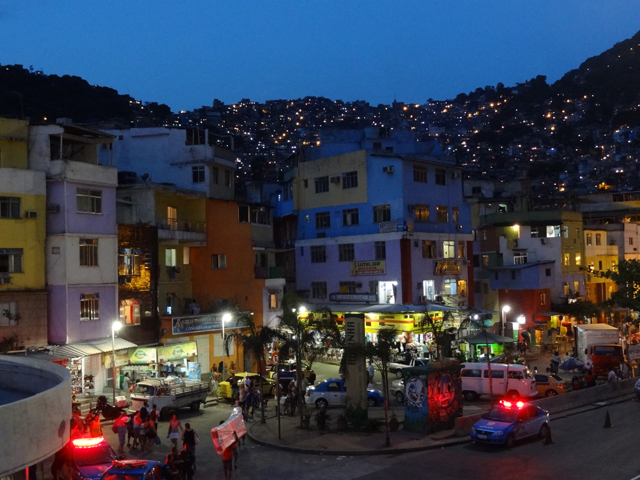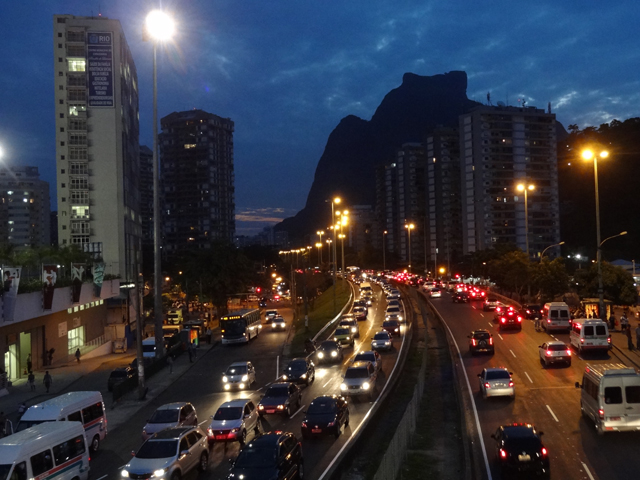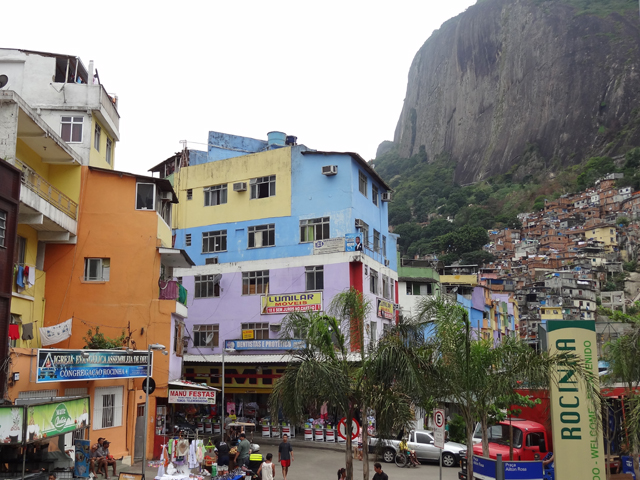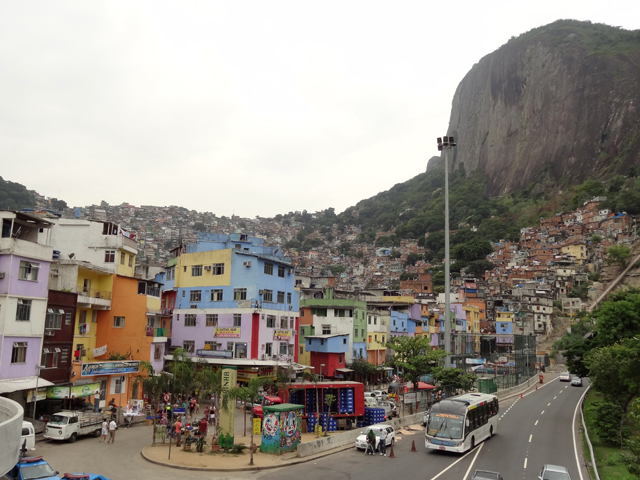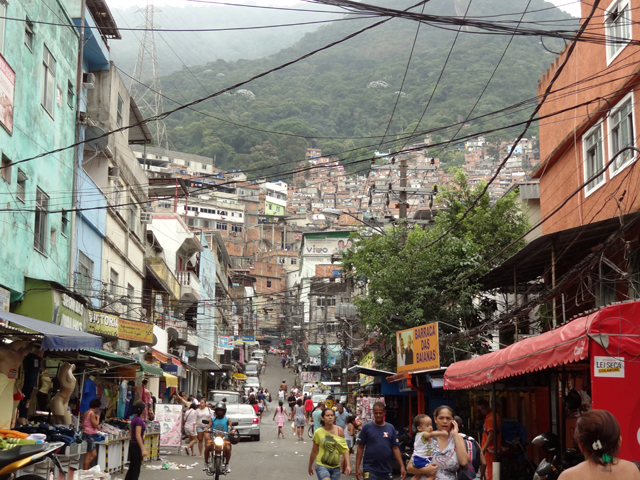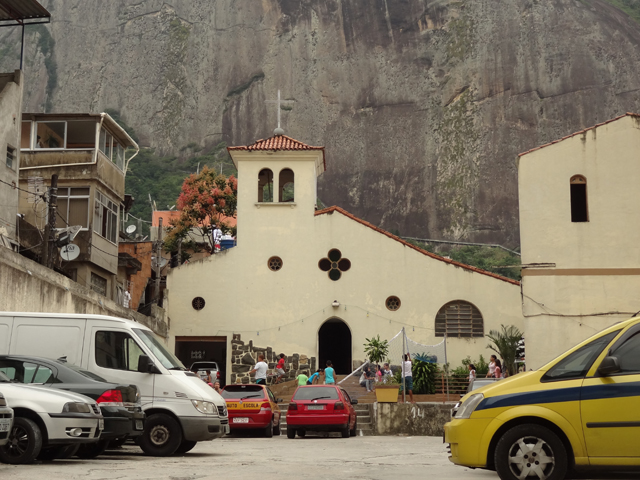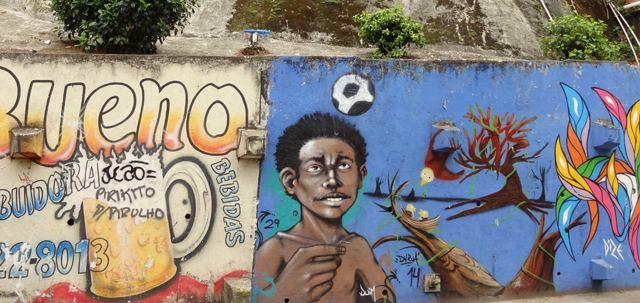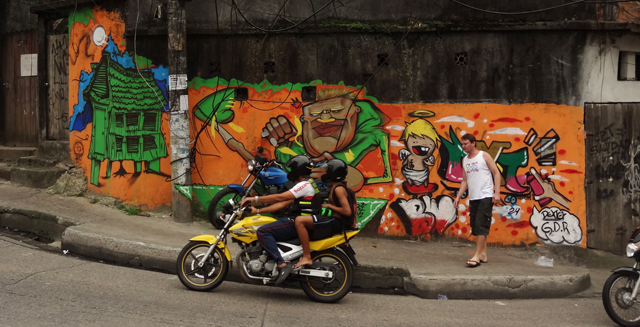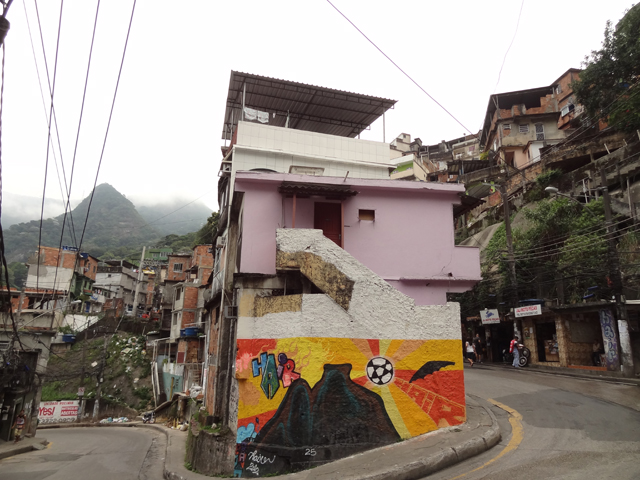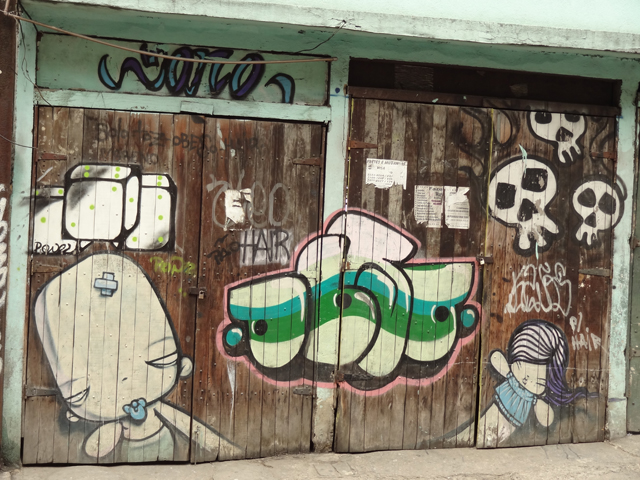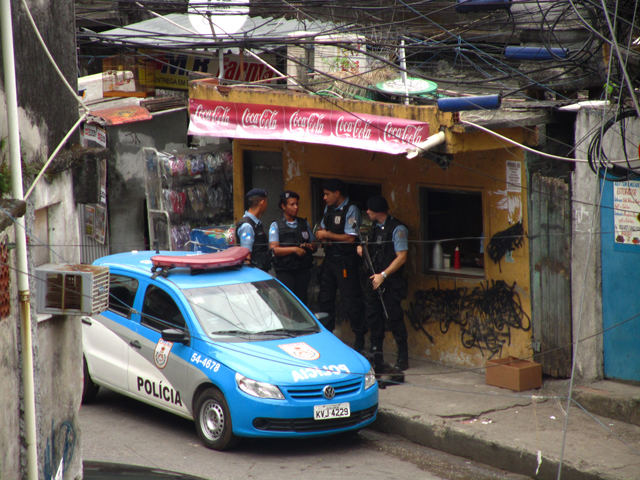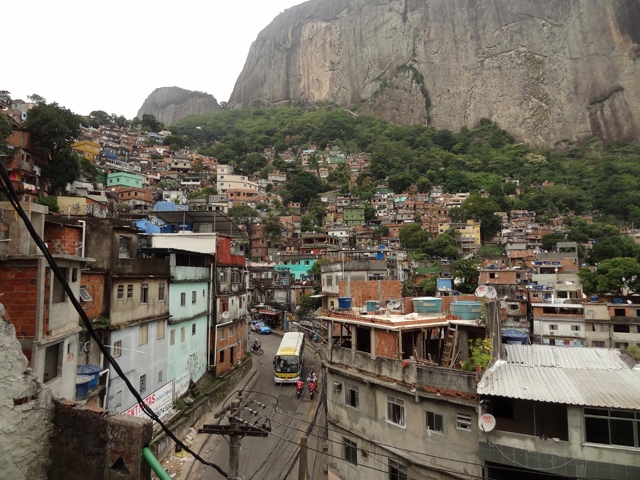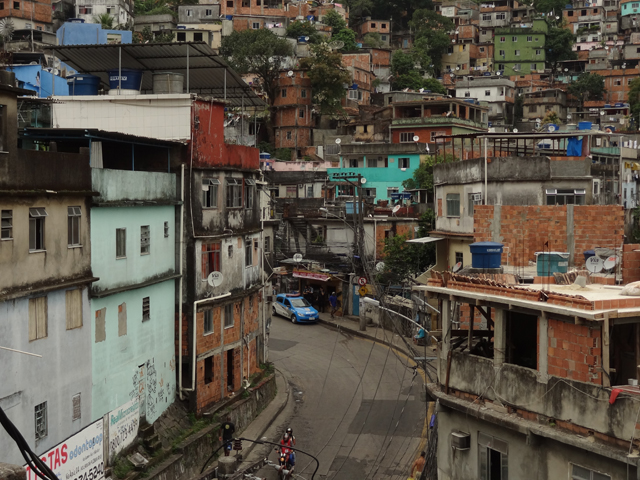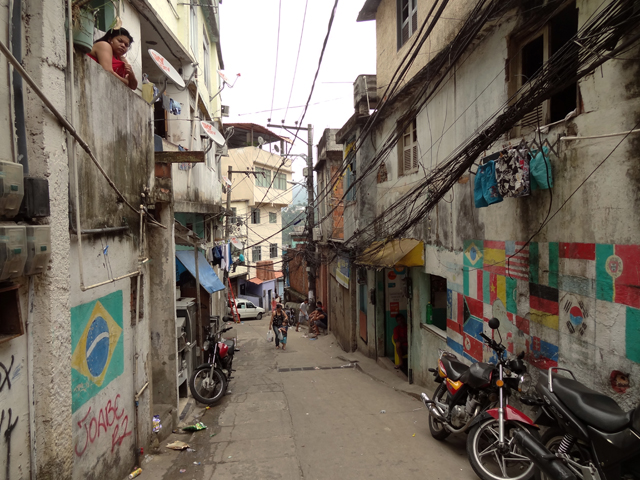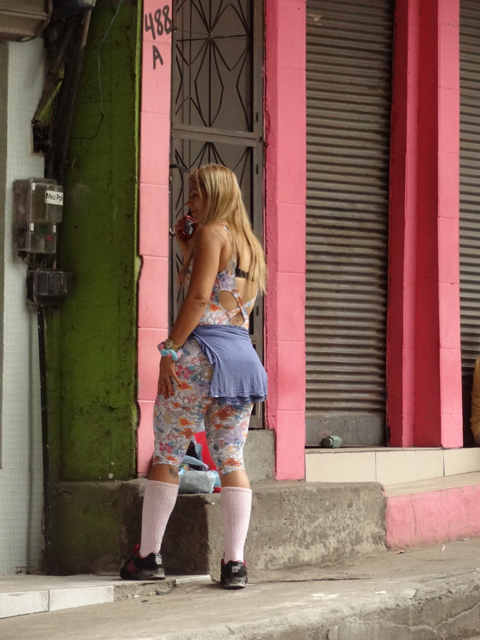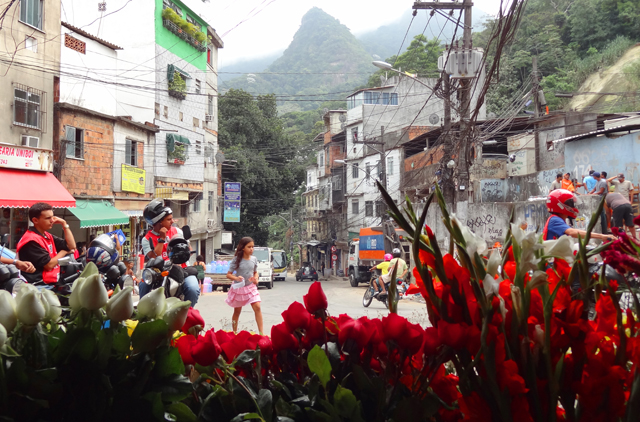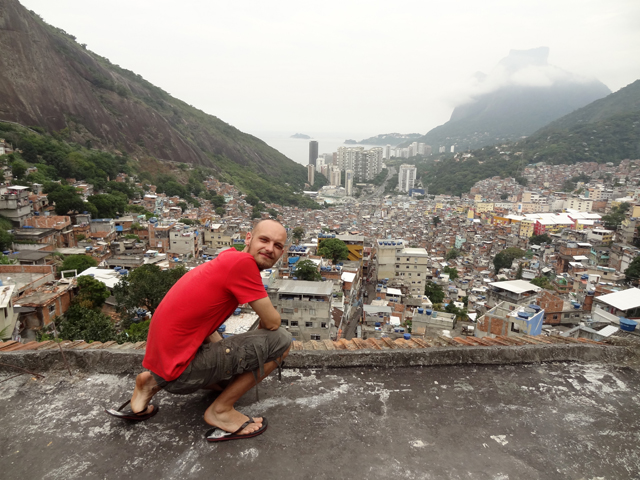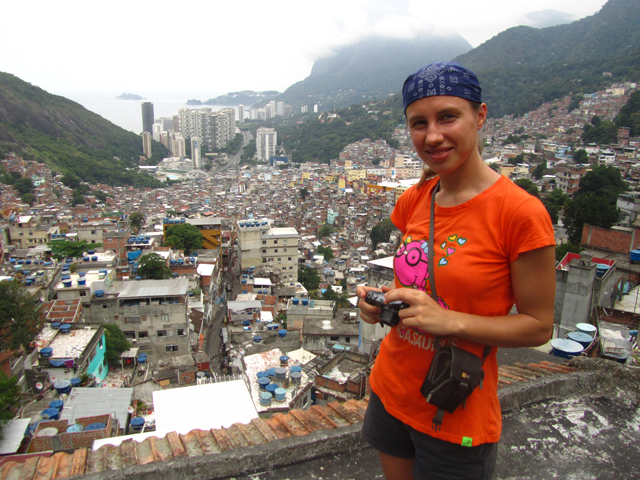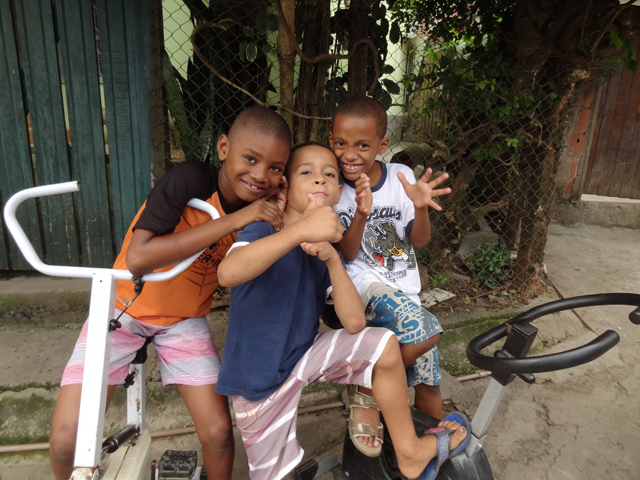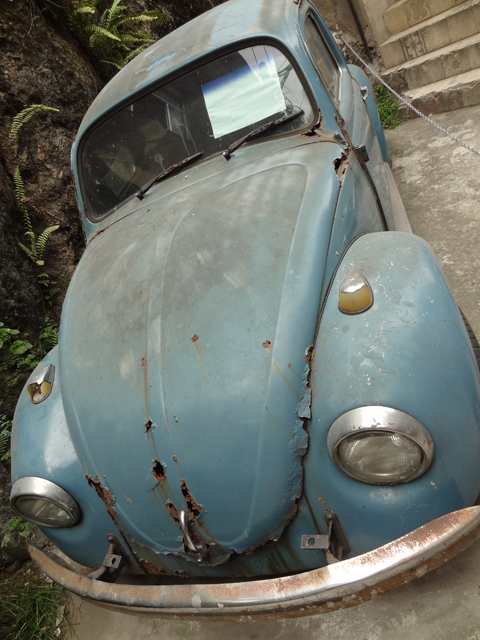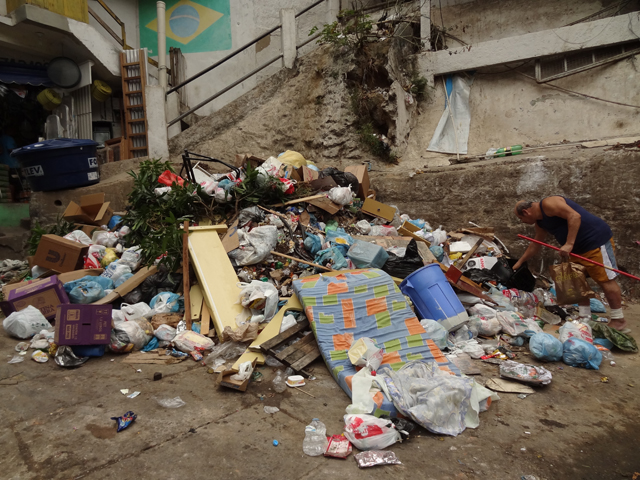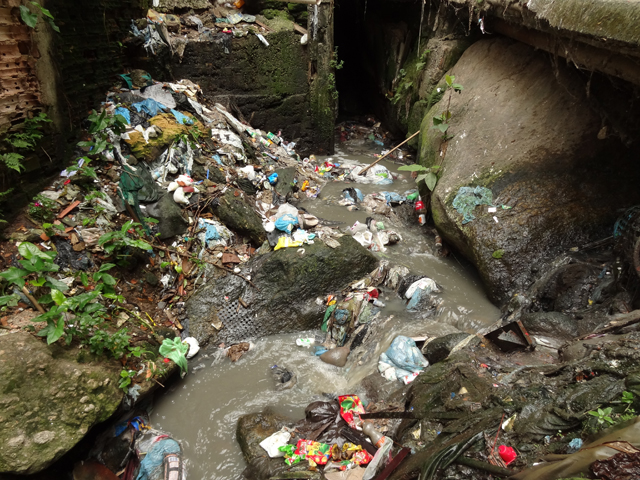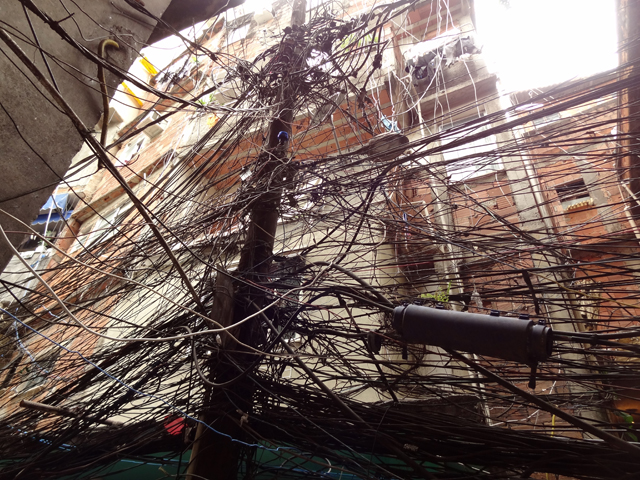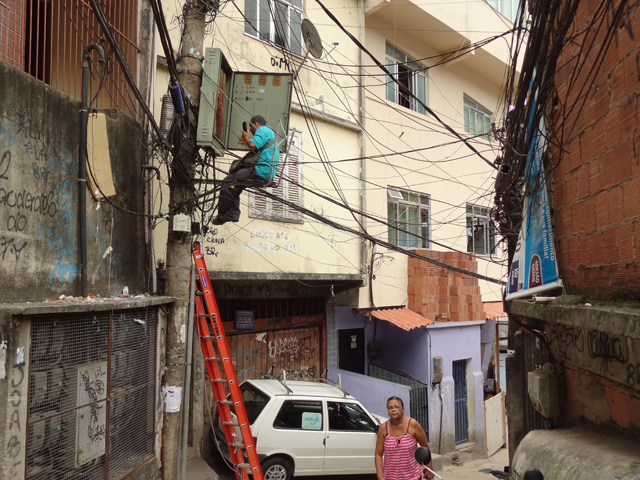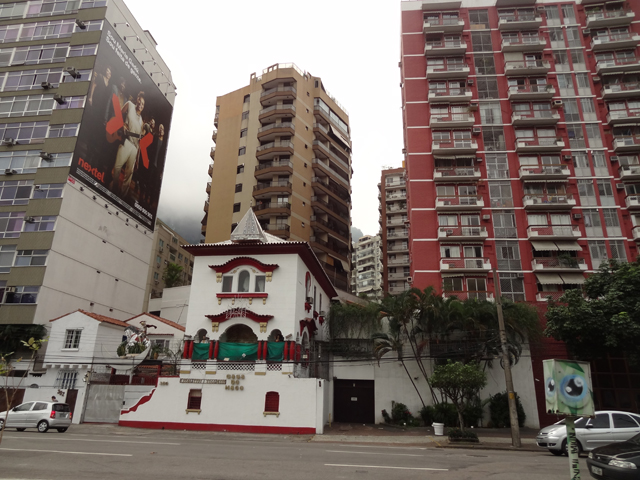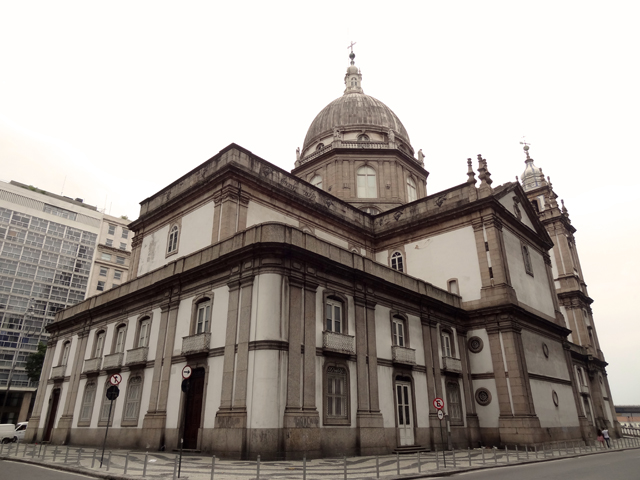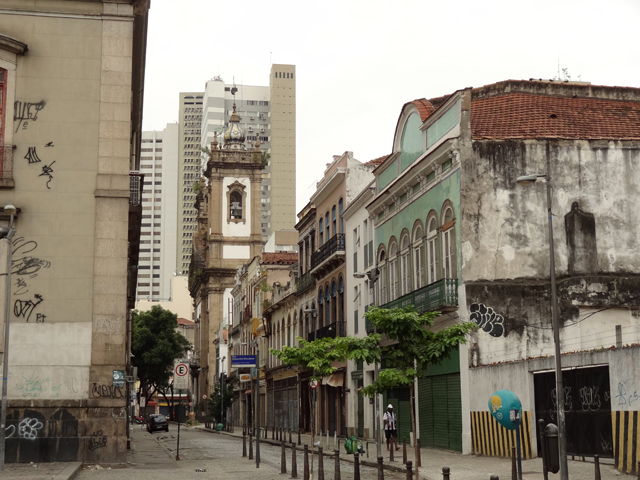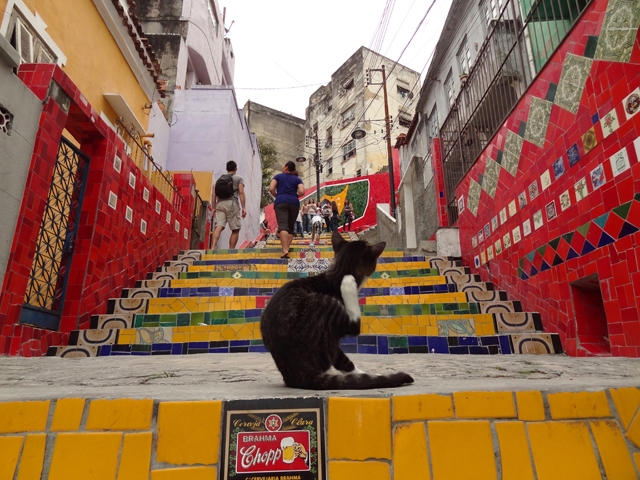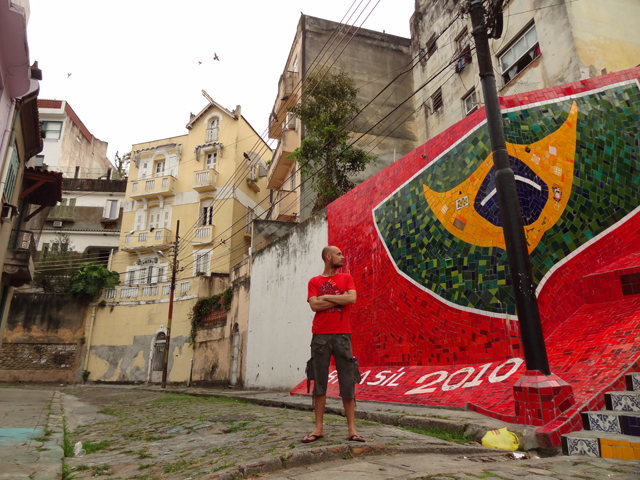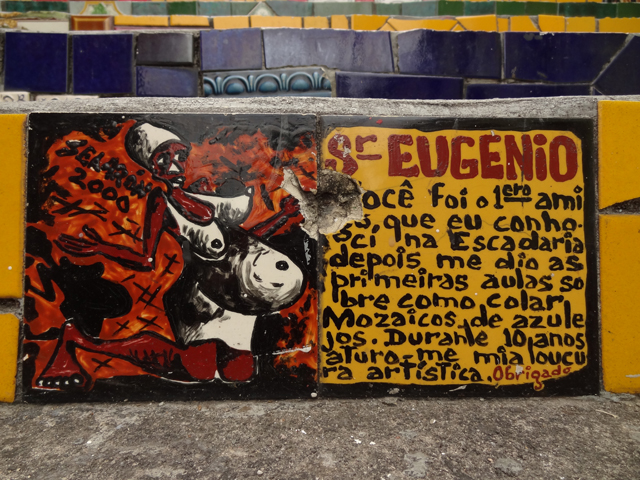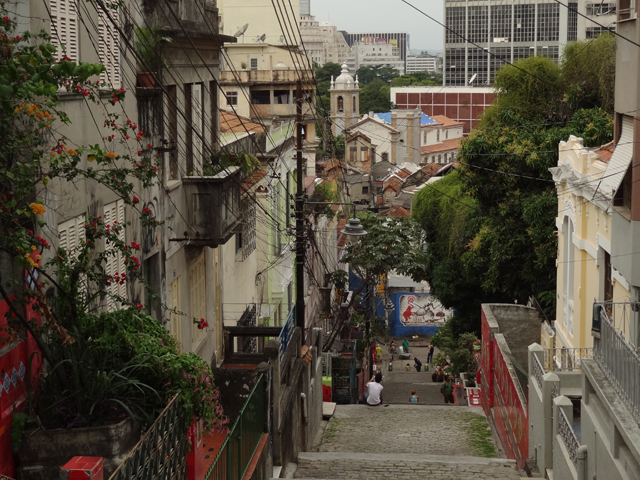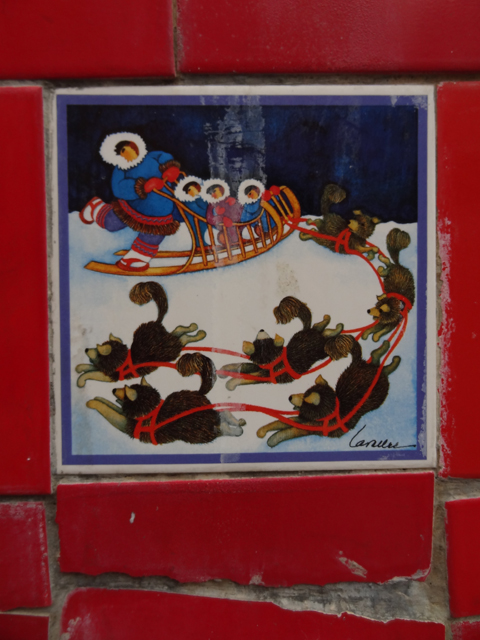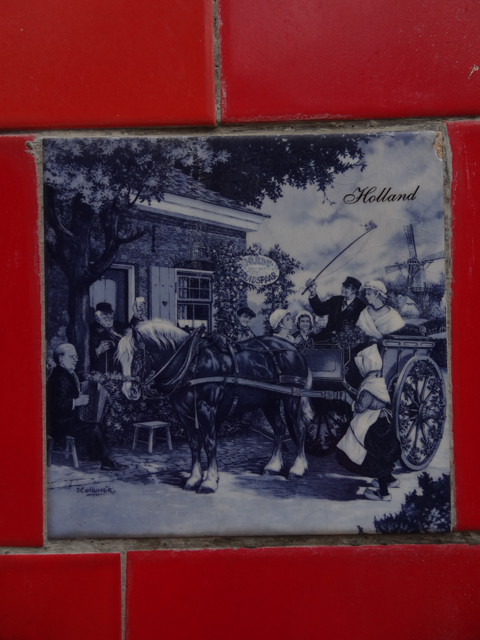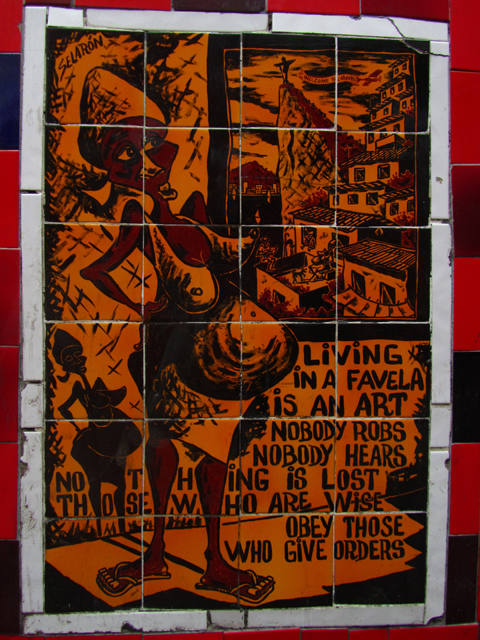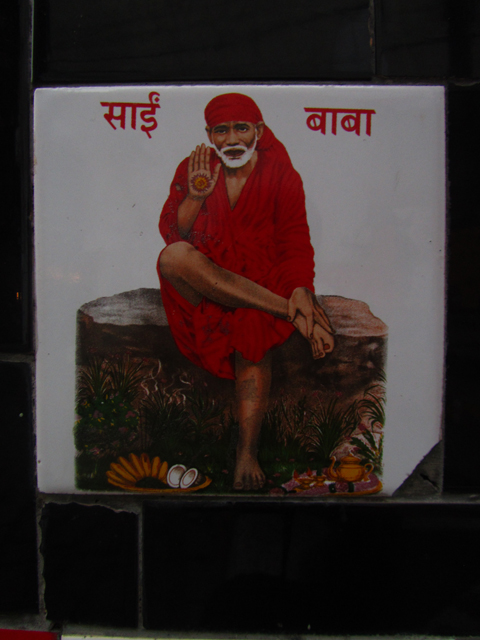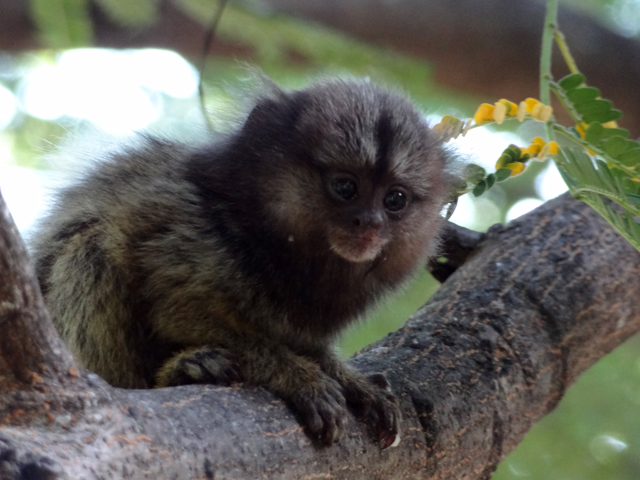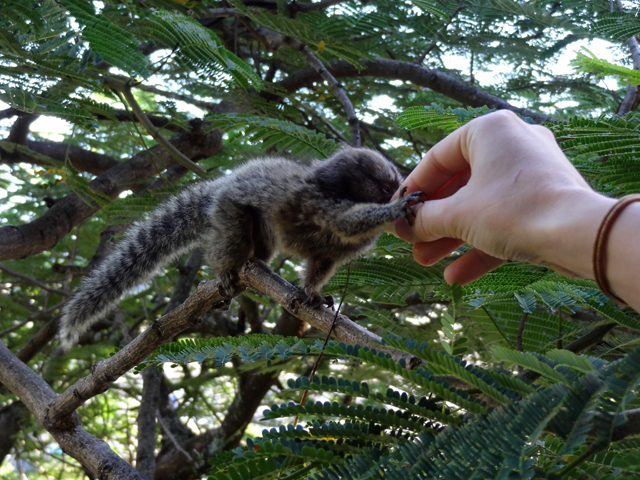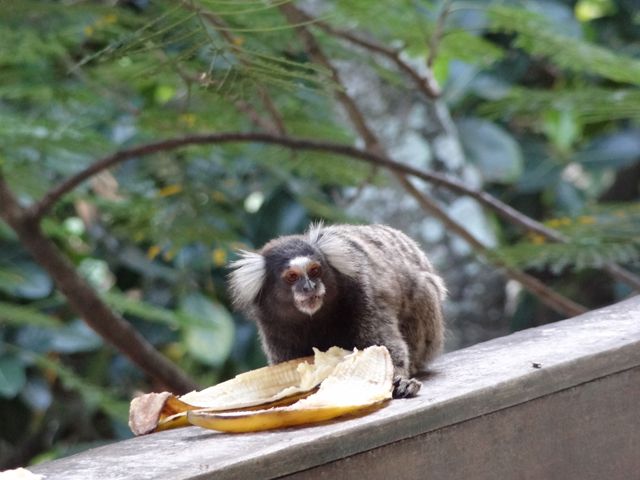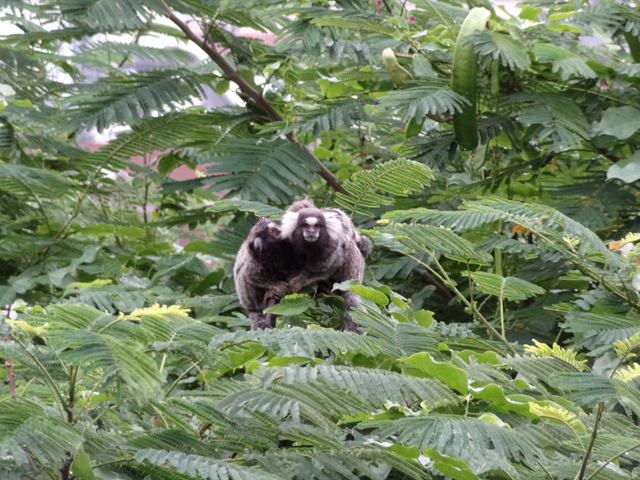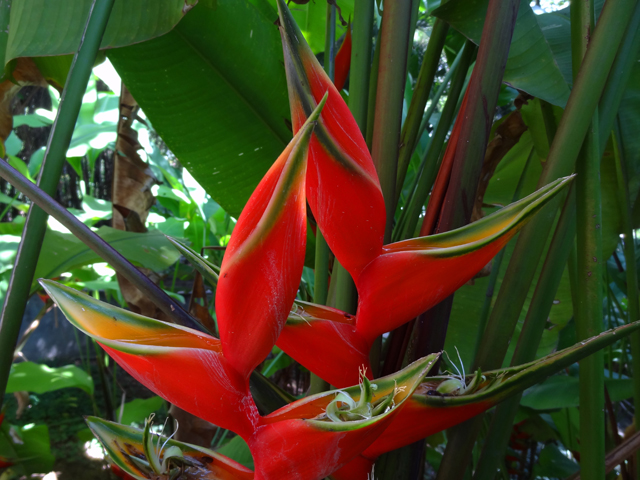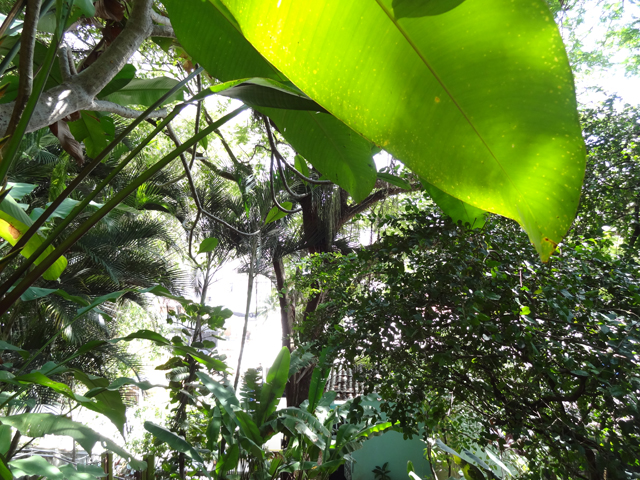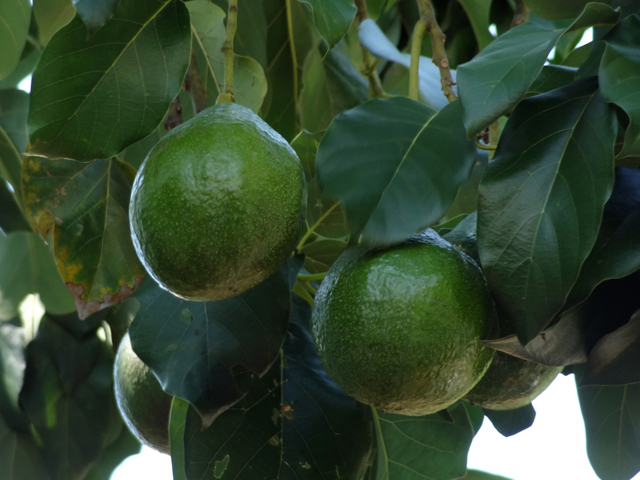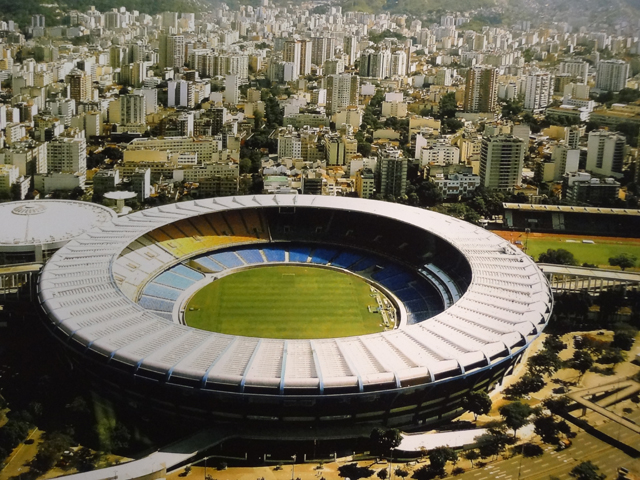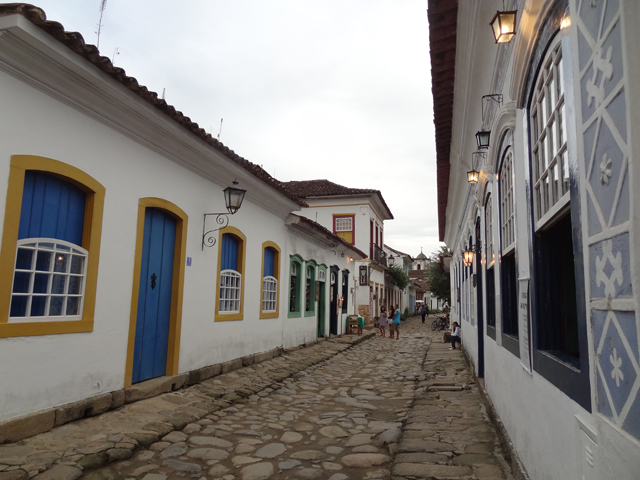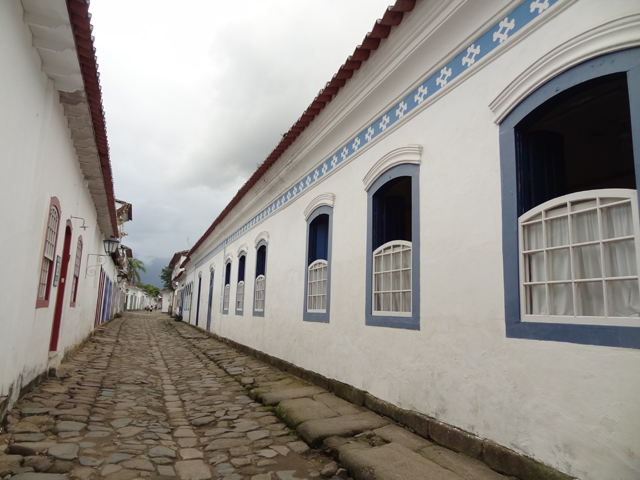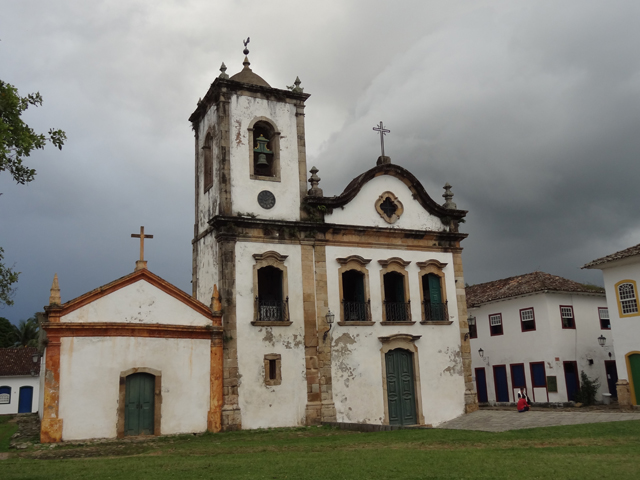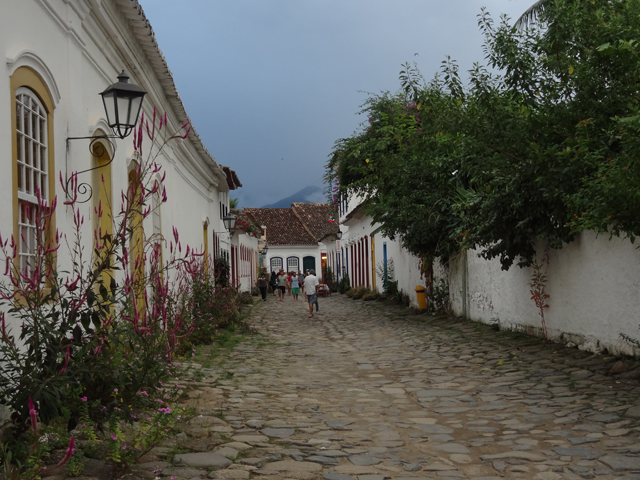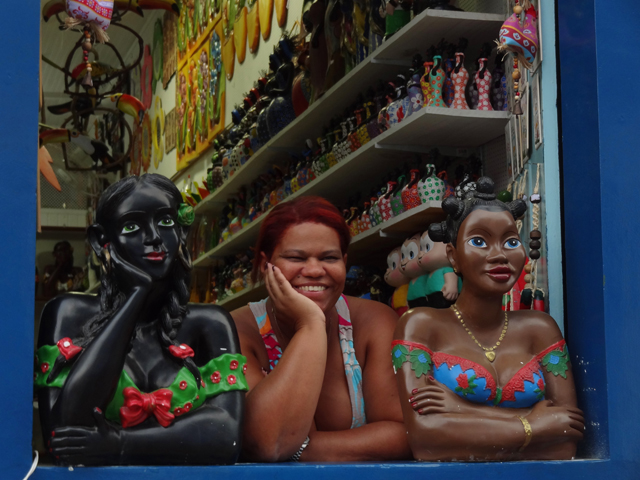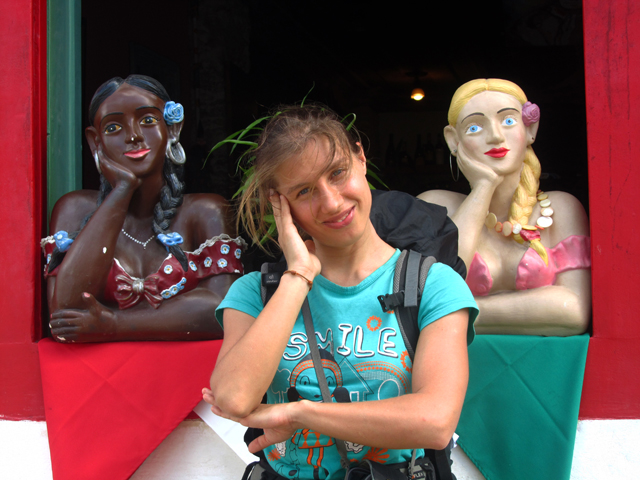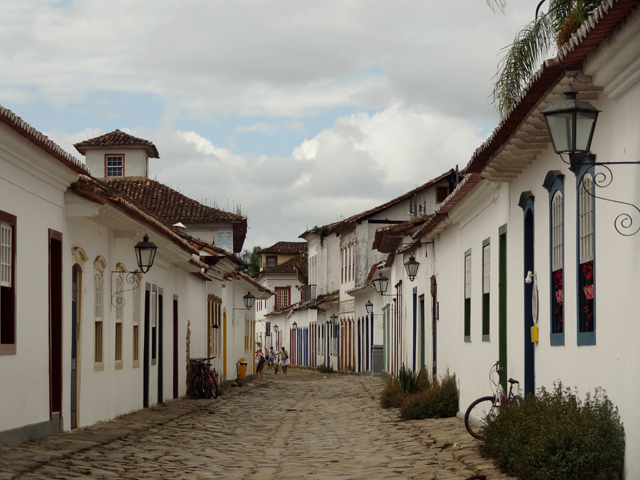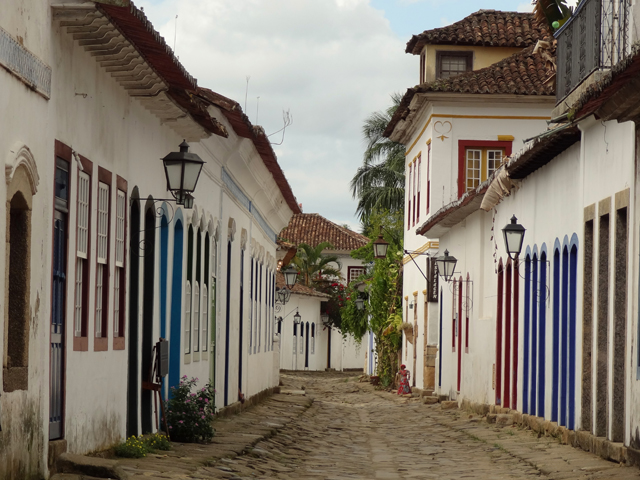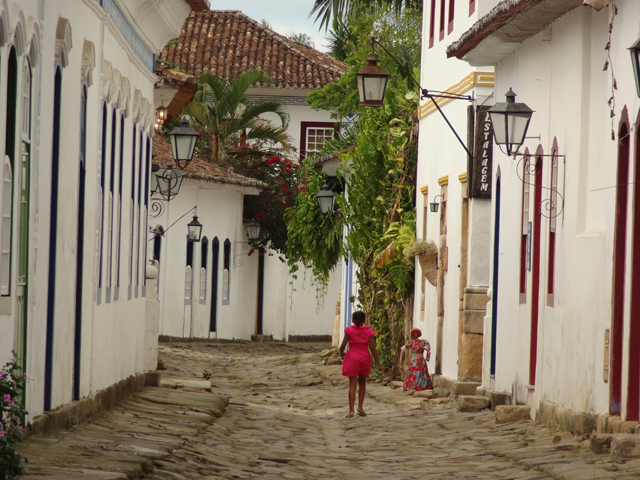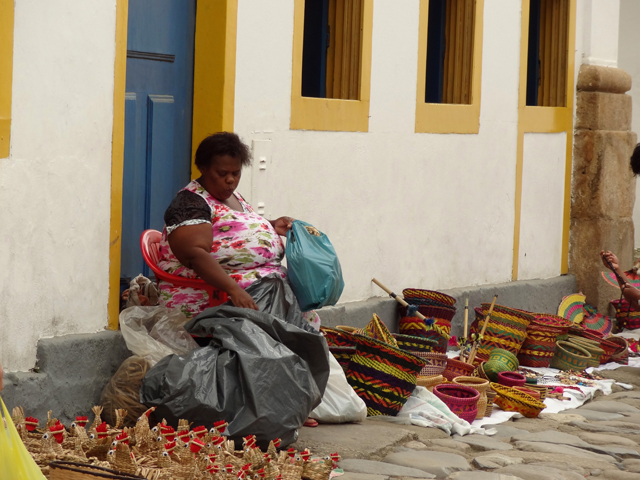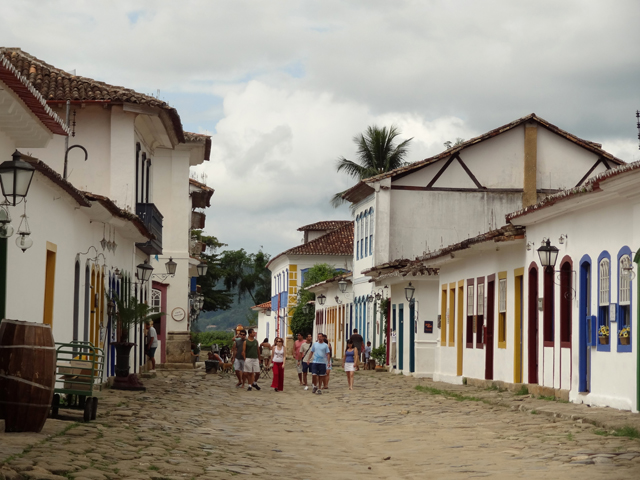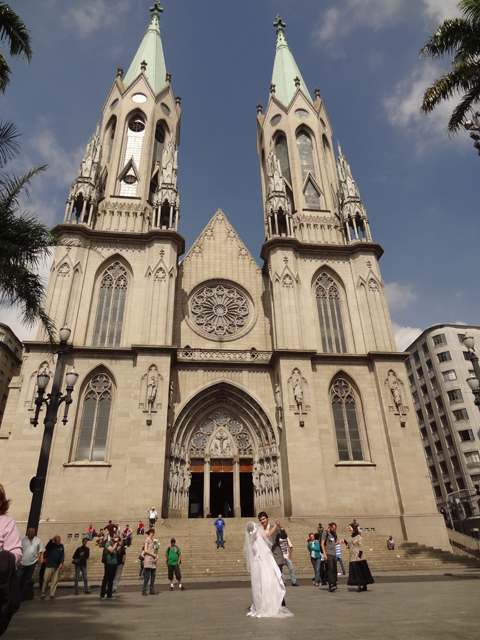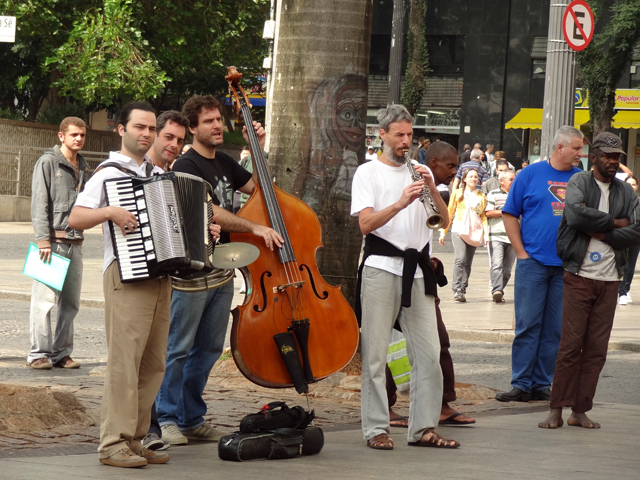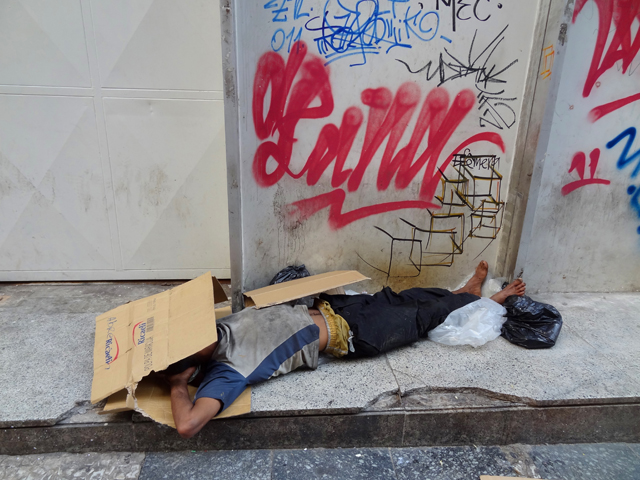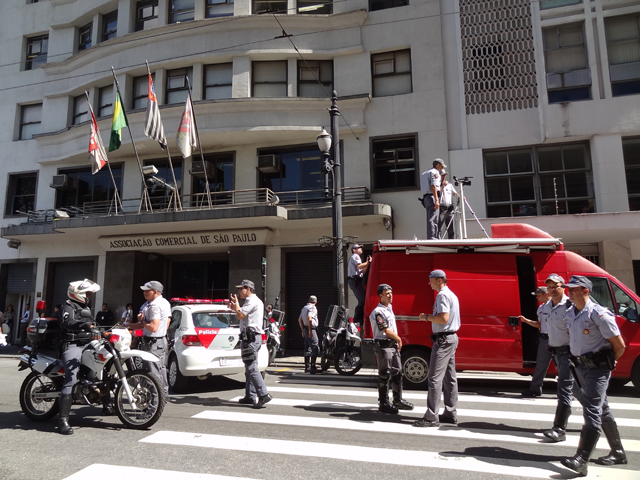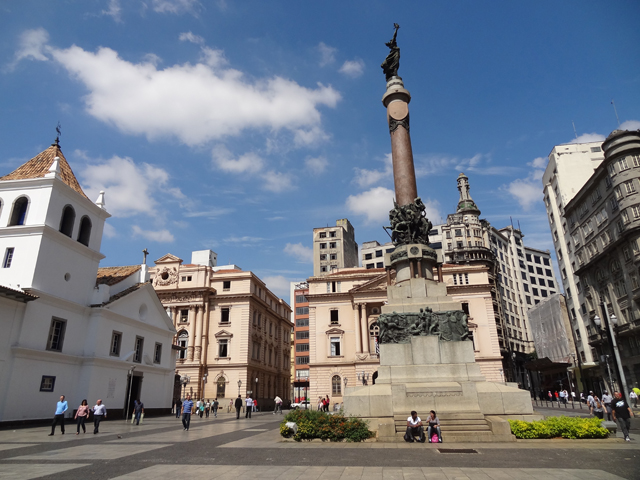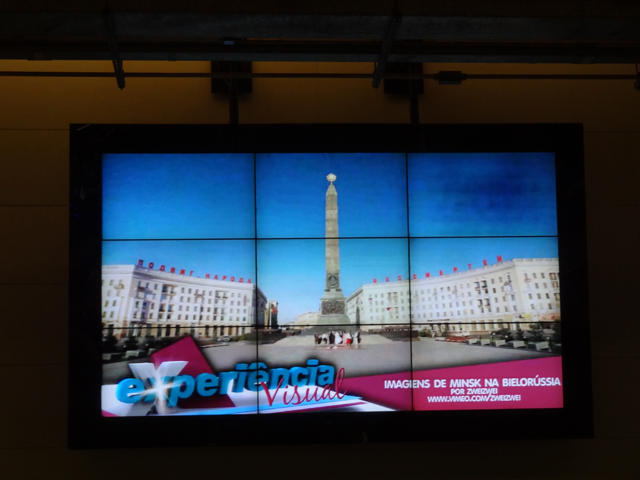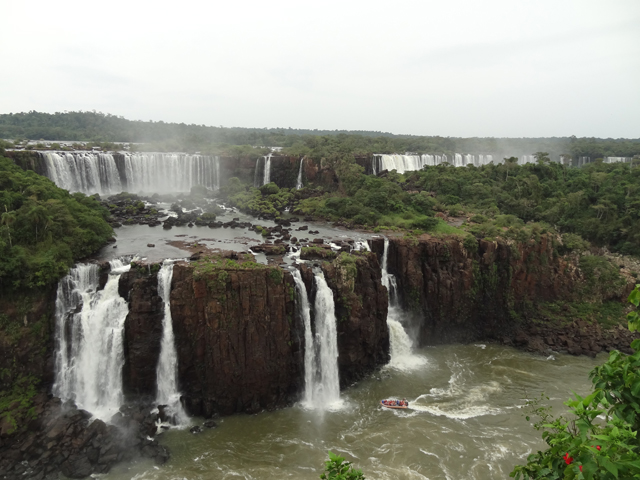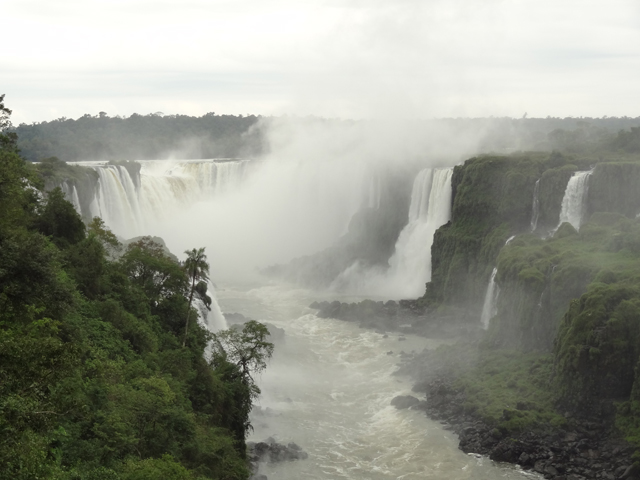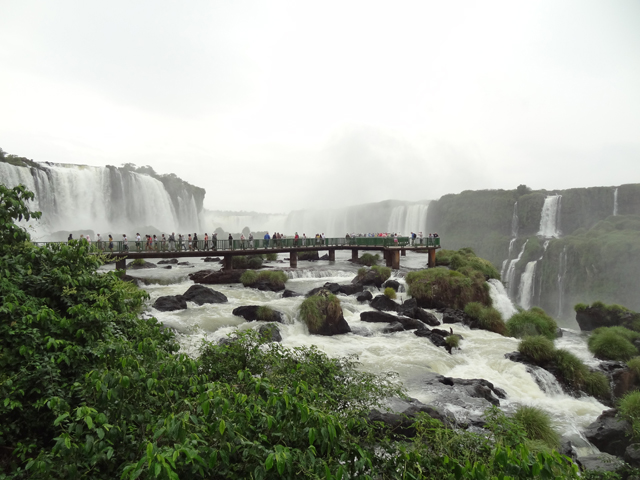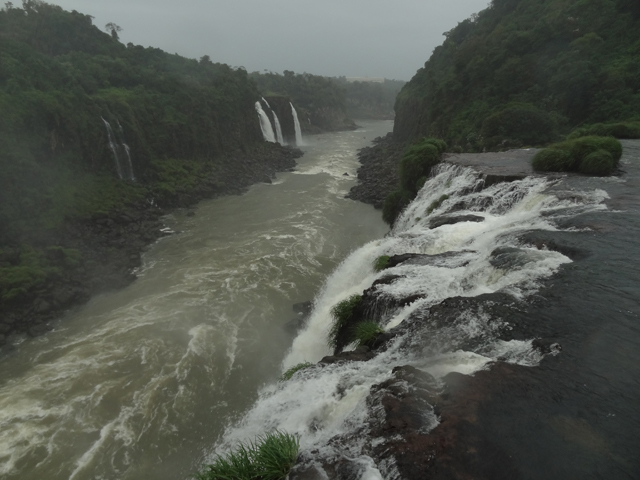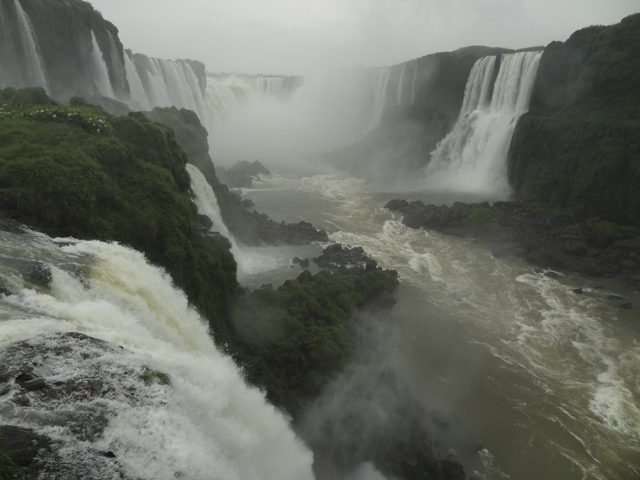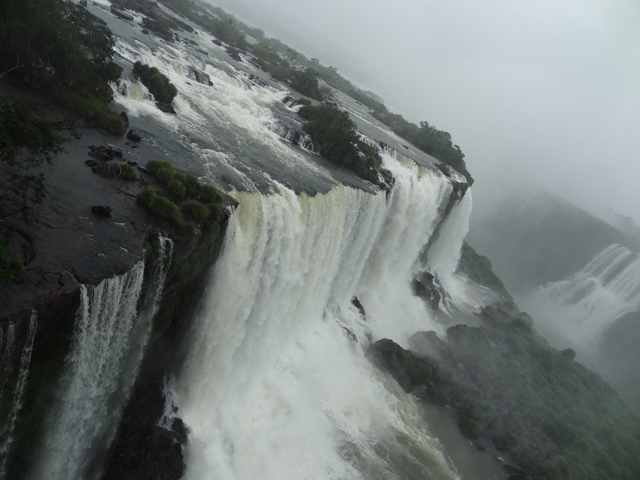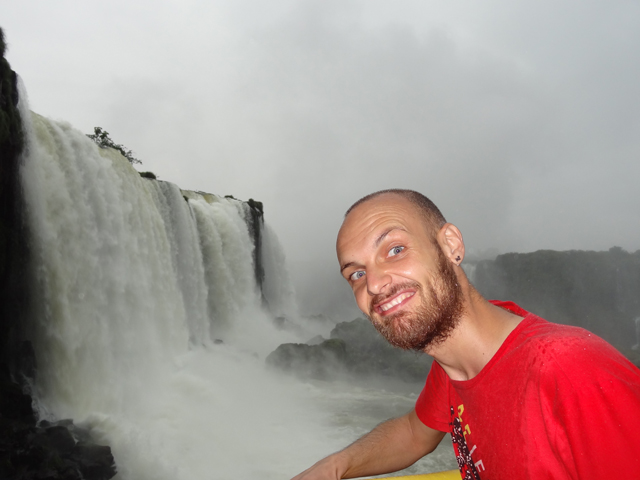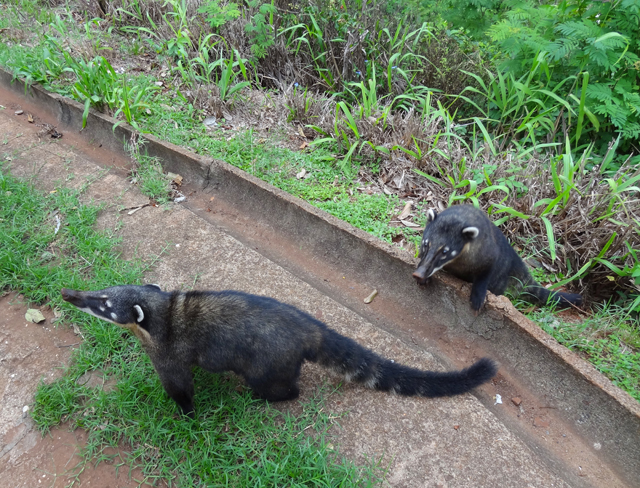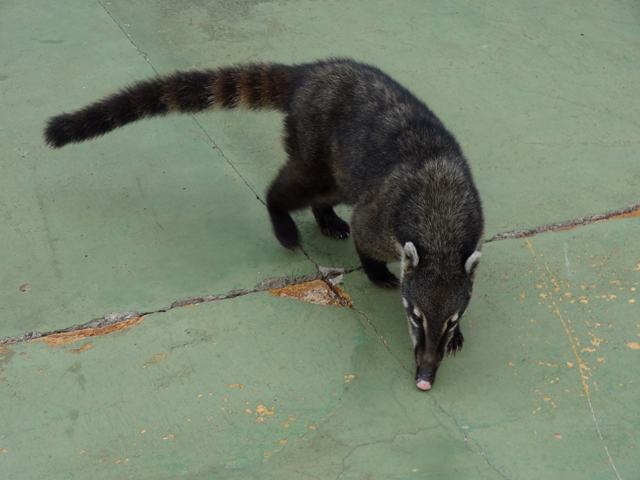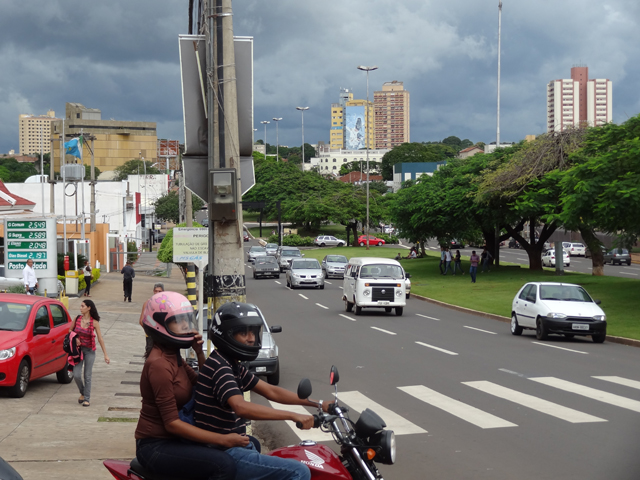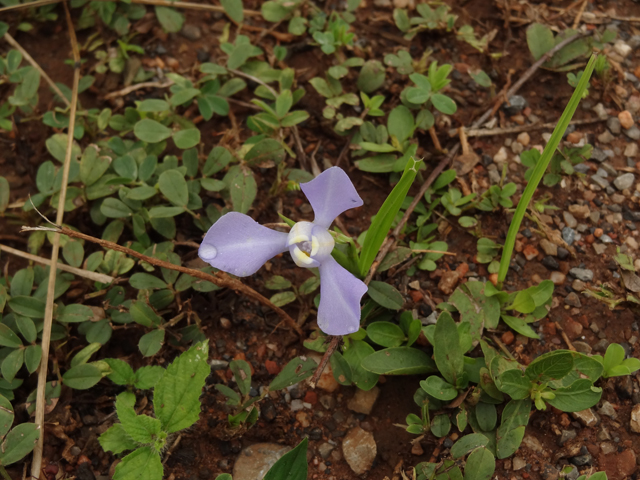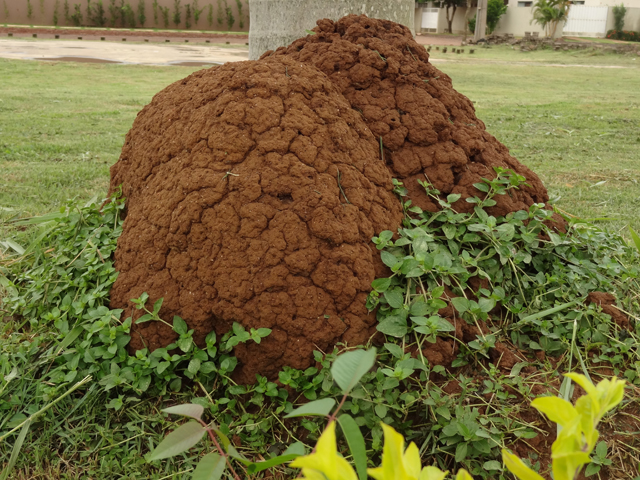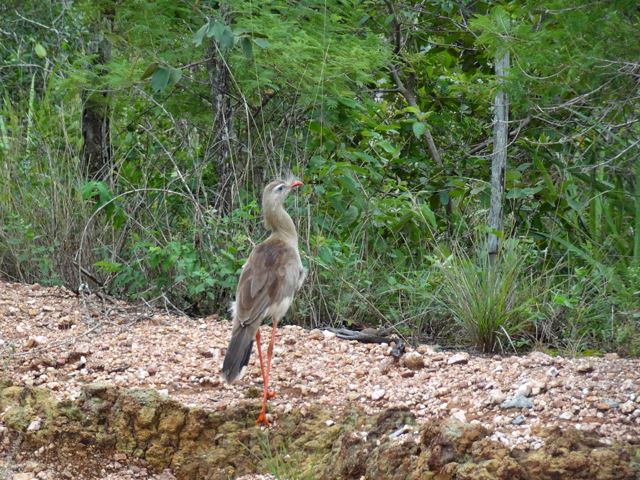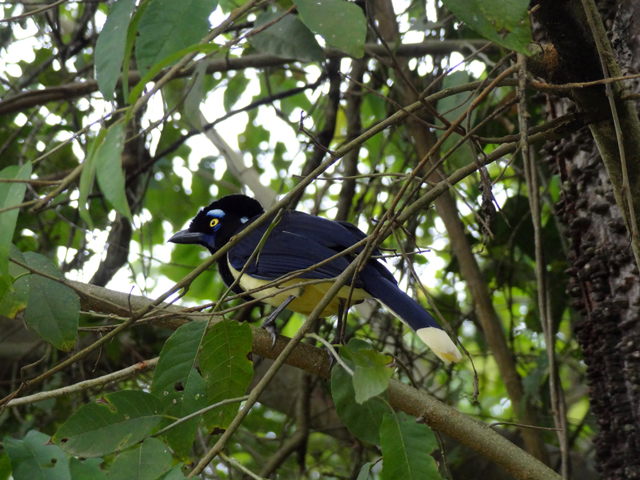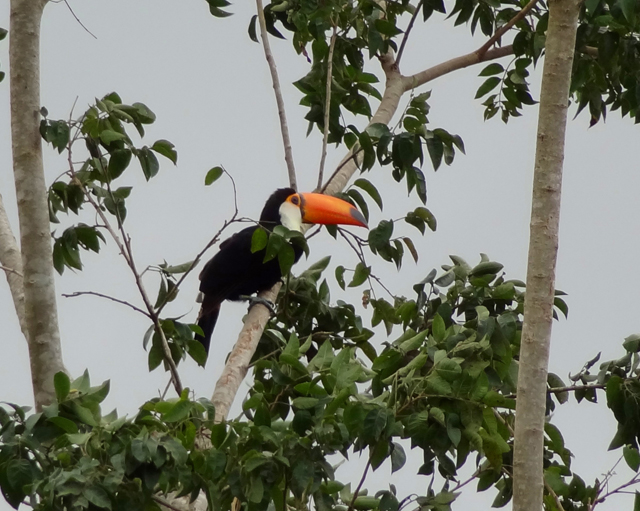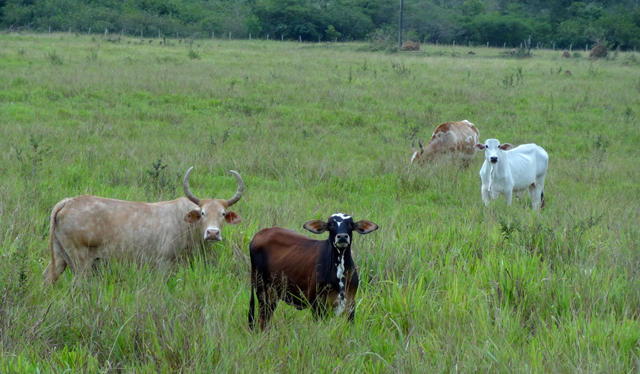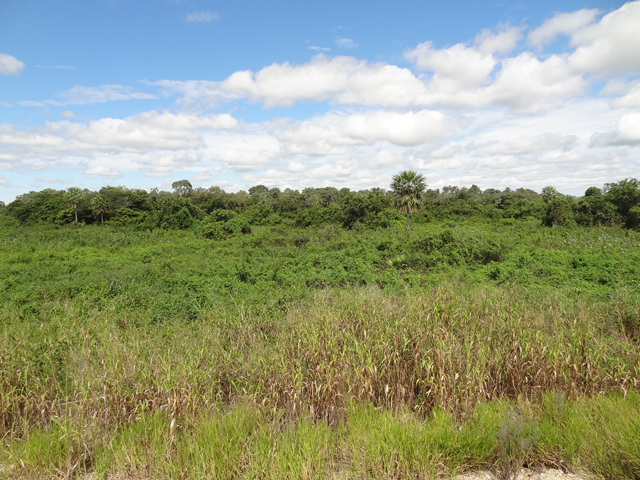Brazil - legendary cities, incredible nature and horrible food
With 26 empty visa pages in my new passport, we were ready to travel South and Central America. Compared to Asia where we spent almost 2 years, this will be a much shorter trip - at most 6 months. Osipovichi to Rio was a long journey but we really enjoyed our two major stopovers: Riga where we got by an overnight bus from Minsk and had a day of sightseeing (and rain) and a night at the airport, and Frankfurt where we had about half a day to see the touristic centre and have a "frankfurt" - the original hotdog. After 2 days and 3 nights of travelling by almost every single means of transport, we finally arrived in Rio! The first things we had to do on disembarking our super comfortable TAM plane was put our jackets back into the bags (as the autumn in Brazil felt warmer than the spring in Belarus) and change some money (as no ATMs in the airport would service our cards); and take a bus to Botafogo - the area of Rio where we booked our dorm beds in the Rio Nature Hostel.
Now there are legendary cities in this world - simple hearing of their name will stir some kind of emotion in almost everybody, including people who have never been there. Paris, Venice, Las Vegas, Shanghai etc. - I cannot list all of them here, as I would have to make sure the list is exhaustive and that's a tough task to do (similar to creating the final list of the modern world's wonders). Well, Rio is definitely legendary! But unlike some legends, this one can definitely live up to the highest expectations. Just like its people (or maybe because of them), Rio is very diverse: it has many faces and many surprises. Walking on the white sand of the beautiful long beaches, climbing up the mountain to check what view Christ the Redeemer has over the city, cheering for Barça playing against Chelsea at an Ipanema bar together with the locals, witnessing a runover accident caused by insanely fast driving style of Rio inhabitants, going to check what Cidade de Deus really looks like these days, observing cats, ducks and capybaras at a park in Central peacefully hang-out together, saving a baby lemur right in the hostel, looking down on the city from a rooftop of one of thousands self-made houses in a pacified favella - these are just some of the highlights for our short (4-days) stay in this city. Here is a little zoomed-in picture of this unforgettable time in Rio:
Straight on arriving at the Rio Nature hostel we saw that the "nature" part of its name was not artificially chosen, but in fact quite accurately reflected the location of Rio's cheapest but truly authentic hostel. Walking up the entire slope of the mountain where the hostel is located was generously repaid by the view we got over the city (which included Christ the Redeemer and some picturesque favellas), the abundance of plants, flowers and trees the hostel was surrounded with (including a giant jackfruit and an avocado trees), and - this was the best surprise - a lot of little monkeys which would come down the wide branches of acacia tree every morning to join the hostel's guests for breakfast (only the banana part of the menu :-). On establishing that accidentally we'd made a very good choice regarding the hostel (originally we booked it simply to get my Brazil visa), we left for our first day of Rio exploration, which included the areas of Botafogo, Pao de Açucar (Sugar Loaf) ( and Vermelha Beach), Copacabana and Ipanema. We started the day by looking for an ATM that would finally give us some cash and not want a 10-dollar commission. We'd read online that Banco de Brasil and HSBC would be ok, but quickly discovered that not all their ATMs would service foreign cards. The girls at a Botafogo branch of Banco de Brasil gave us a good tip, which helped us find the branch with the right type of ATM. This was one of our first dialogues with the locals and that's when it already became clear that English was useless in this country, but not Spanish - apparently Portuguese and Spanish are mutually intelligible. Good for us :-)!
Having fixed the money thing, we took a walk along the Botafogo beach from which we had a nice view over the Sugar Loaf mountain and where we - or rather - Jordi was immediately approached by a local guy with an offer to buy some marihuana. (I bet Jordi really looks like the picture of "your most probable customer", which these people must be shown in whatever schools they attend to learn the drug dealing job, because they always, always approach him :-) We declined the offer and headed in the direction of Pao de Açucar (Sugar Loaf mountain). It was a beautiful and probably prestigious area with rich neighbourhood sprawled all around it. We checked the price of the cable car to go to the top and decided to skip it. The small and cute Vermelha Beach was right there, so we spent some time observing some courageous locals swim in what seemed to us like freezing water and the rest of the normal people just having a fun day at the beach. Unfortunately, when you have only 3-4 days in a city like Rio you don't have the luxury of just chilling out at the beach and actually the beach itself is first and foremost a sightseeing attraction. We had two more beaches on our list for that day, so we continued walking. After another long walk from Pao de Açucar to the area of Copacabana, we got to one of Rio's most legendary beaches - it surprised us how huge and peaceful it looked. It made us feel like we were far from any civilization, a really weird feeling in a megapolis like Rio. From Copacabana we walked to Ipanema where we found another really long and really peaceful beach that gave us the same feeling like Copacabana. At that time the sun was setting, wrapping the mountains surrounding the Ipanema Beach in gorgeous mellow light - a sight we'll never forget (and took a photo to help us remember :-). We left the beach and were walking through Ipanema area when Jordi discovered from the TV screens of the multiple open cafes that Barcelona was playing Chelsea. That definitely qualified as a really strong reason for a beer stop (a major exception on our round-the-world travel accounting sheet), so we picked a cafe with an empty table right opposite the TV and watched the sad defeat of Barça together with the locals who took it just as bad as Jordi. So we closed the first day in Rio with lots of memorable experiences for me, and all of those plus a lot of sadness over Barça's defeat for Jordi.
We started our second day with the same delightful feeding of the little monkeys as the day before. After this shared breakfast we set off on our walk towards the main attraction of that day - Christ the Redeemer. To skip at least some of the monstrous fees for the public transport that we had to pay in Brazil, we decided to walk to the base of the mountain that holds Rio's most famous landmark. Now Christ the Redeemer must be watching over the people in Rio and must feel really helpless seeing them get run over - there's just no way accidents wouldn't happen in a country where people drive insanely fast by any standards. As we were walking to see Christ the Redeemer - it was our second day in Rio - we already witnessed a horrible runover accident where an old guy was hit by a minivan. Lucky for the old guy, a couple of guys who saw the accident were trained medical workers, so they rushed to him to stop his bleeding and monitored his state till the ambulance picked him up about 5-10 minutes longer. The conclusion we drew from this accident: chances to be run over in Brazil seemed very high, but an ambulance would arrive pretty fast - so in general, mixed feelings.
That's the state in which we continued walking to the mountain with Christ the Redeemer. A while later we found a small crowd of people - that's how we knew we arrived to the station of the train that goes up the mountain. The ticket for the train was shockingly expensive, so we asked around for alternative ways to get to the top. Of course, where there is a will there is a way, so we found out that there were indeed more ways to get to the mountain top, including going by taxi, motorbike taxi or even walking. Motorbike taxi seemed like the best money-time option, so we agreed on the price with a couple of young motorbike taxi drivers who promised to take us all the way to the ticket office of Christ the Redeemer on top for something like 10 euro. For additional 10 if we wanted they'd wait for us for an hour and give us a ride down. However, half through the way they discovered that there were police checkpoints on the road (which they couldn't pass without proper vehicle documentation), so they apologetically suggested that we continue by minivan which supposedly was available from that point to the top. We paid them a little bit for the lift and they left. From then on it got a bit messy, as the guy who was supposed to help us get the right minivan, was not really honest and instead of a minivan a taxi emerged. However the price was decent (especially compared to the insane train fee), so we took it all the way to the ticket office which turned out to be just a short drive away (if we had known that, we would have walked, which we did on our way down). The ticket for Christ the Redeemer visit included another - free - drive by bus to the top, and after another short drive and a couple of escalators and elevators (I think according to architects who design tourist infrastructures, people are really not able or not supposed to walk these days), we were right at the bottom of this huge (but smaller than we'd imagined) statue. We spent a couple of hours there, taking in all the breathtaking views over Rio, watching all the helicopters and even one hang-glider have a better view over Rio and the Christ's statue than any of us, also took our dozens of pictures, including some panoramas (the neat feature of our new travel zoom Sony DSC-HX9V) and headed back. Like I mentioned, we decided to walk down as we knew it's a reasonably short walk (about 40 minutes) to the police checkpoint where we could catch a bus to Santa Teresa neighbourhood close to the Central area of Rio - our next destination. On the way down very close to that checkpoint we found a directions board saying that we were 500 metres away from a viewpoint so we made a detour and found that you could indeed have an awesome, much more peaceful and absolutely free view over Rio (almost as good as at the very top) from what turned out to be a helicopter base!
After the super noisy bus trip to Santa Teresa, which passes through the old unused train rails (which we heard used to be a scenic touristic ride before) I was surprised that all my bones still seemed to be in place even though I'd swear the driver's job description included something like "shake the passengers up to the degree that at least some of their bones fall out". Lucky for us, from the quiet and beautiful neighbourhood of Santa Teresa we could just walk down to Central which was the last area we visited that day. Central was different from the beach districts of Rio - it was Rio's old, solemn, colonial face. Some things that struck us about Central were: the park where street cats were hanging out together with ducks and capybaras (giant rodents), a colourful market which occupied the territory of a whole block and was decorated all over with multi-coloured flags (which reminded us a little bit the prayer flags of Nepal) and all the happy buzz of a Friday evening filling in the narrow Central streets lined with stalls, cafes and shops.
Next day started like all the previous ones with the happy interaction with the sweet little monkeys who'd come to get some bananas before they'd proceed to the top sunlit branches of the trees for their daily sun-bathing nap (kind of early siesta). I don't know if it's watching the unhurried monkeys that made us linger, or the comfortable terrace of the Rio Nature Hostel, or the fact that we needed to do some internet research to plan the rest of our trip in Brasil, but that day we left the hostel quite late (at about 11 am) and after a bus ride that would easily qualify as the worst nightmare of a person with a motion sickness (me) got to our first stop - the area of Gabea - at around lunchtime. While I took my time to recover from the bus ride as we walked around the area and had lunch, we spotted a bus which had the legendary Cidade de Deus (City of God) as its destination. On impulse, we decided to change our plan for the day and go check this neighbourhood with our own eyes. I don't know whether we'd still do it had we done all our homework of looking before leaping (= checking before taking the bus), but it turned out to be almost a 2-hour ride, with the same bone-shaking kind of driving as on all the buses we'd taken in Rio, to a neighbourhood which although it was indeed the setting of the movie with the same name (Cidade de Deus) is in reality just a very ordinary-looking neighbourhood (favella), in which children run around with toys, not with guns. And not like it's disappointing in any way that there are no guns and drugs in it these days (we could only hope that all Rio favellas will reach the same state some time in the future), but compared to other favellas you can visit in Rio this one could easily be the least picturesque one. The nice part of this truly long impulse trip was that we saw some really diverse outskirts of Rio (fancy houses with yachts parked right in front of them and poor neighbourhoods with open canalization and a lot of garbage lying and flying around), as well as spotted the favella which we knew is the best one to visit, as we saw it in some tourist brochures offering tours but didn't know the name of. Now we knew it - Rocinha. On the way back from Cidade de Deus we stopped there to take some twilight pictures, but ventured only for a short walk up the main street, as it was really busy with people and motorbikes, and was getting very dark.
Rocinha is where we started our next day's sightseeing program, but not before we had another truly striking interaction with the little monkeys. That day as I was walking up to the hostel terrace to join Jordi in our meditative waiting for breakfast time, I heard an animal cry that struck me as a sound vibration of distress. There were many animals, birds and insects around so I wasn't sure about it, but since the crying continued I started looking around and on the ground in the cement ditch full of leaves and water I found a tiny baby monkey: the poor thing must have fallen from his mum's back and was trying to crawl out of the ditch without any success. I took it out of the ditch (that was an obvious step to do) and put it under the tree (about 1 metre higher than the ditch) from which it must have fallen in the hope that its mum would come fetch it any moment. However, after about 5 minutes of waiting there was still no sign of the mum, which meant that this strategy didn't seem to work, so we took the baby monkey to the wooden frame of the terrace, which served as the little monkeys' "dining table" during breakfast. Luckily, we had a couple of bananas from the day before (it was too early, so breakfast bananas were not available), so we spread pieces of bananas around the baby in the hope of luring the mum to come for bananas and get her baby back. Silly as it might sound, it worked! After just a few seconds, the most daring little monkeys started coming to the terrace as we were watching with a pounding heart what they'd do with the baby. The first two just took the bananas and ran back to the acacia tree as if there was no baby monkey right in between all those banana pieces. But then the third one that emerged checked for bananas, then stumbled upon the baby, sniffed it, then carefully put it onto its back and ran up the tree... Well, we were only too happy that baby wasn't an orphan after all :-)!
Ok, so then we went to Rocinha - Rio's most picturesque favella which is also a "pacified" one. It means it's been cleaned of at least the main chunk of drugs and guns and is being continuously monitored by the police at their multiple checkpoints (which can be found on every curve of the main street). A list of random memories from this visit: looking at a thousand of colourful houses nested on the mountain slope from the huge bridge that separates the favella from the other side of the road, where a fancy swimming pool can be found in which kids take swimming lessons, but not the kids from the favella; starting to climb up the main street of the favella with first unconfident steps as we were not sure whether it was ok to do this visit on our own (we hadn't seen any websites/blogs that'd say it was ok); getting gradually relaxed as we saw that nobody was really looking at us as if we were doing anything weird, including all the police officers at the checkpoints; an old couple from the favella passing by and kindly telling us to mind the poop on the road :-); deciding to take a detour from the main road and walking through the narrow streets up the till we started to get really nice views; spotting a place (a TV repair shop) that seemed to have the best view and asking the owner if we could use his rooftop to take some pictures (this is where Jordi kept saying in a very agitated way that it was "exactly, exactly" - I'm quoting - the setting from one of his "Call Of Duty" game scenarios :-); running into a tiny choir of small girls who were singing their Sunday psalms in an improvised tiny church; helping another little girl with directions to find her little brother who passed by us before her and getting a very cute formal "(o)brigada-a" (thank you); receiving the only reference at guns in the whole of our favella visit from the weird body language gesture of an old drunk guy as he showed us something that could mean "If you take pictures here, you can get shot!" (we think he simply never "left" the era when the favella was still under the rule of drug lords); yet taking our chances at being shot :-) and taking pictures of kids who were actually posing for us in exactly the same way that kids all around the world do. It was an awesome visit and we are truly happy we didn't take any tour to do it, as we would've hated to be restricted by the agency's route, especially since there was absolutely no need to.
After the visit to Rocinha we spent the rest of the day visiting the area of Lapa and the adjacent Central (this one for the second time). The highlight of Lapa was its striking artistic staircase, which is made up of bright red tiles intercerted all throughout the length of stairs with picture tiles contributed by artists from all over the world. These stairs are so beautiful even cats hang out there contemplating the tiles in cats' usual zen way (check out a photo below :-). Another thing we liked from this area was all the graffiti - having seen many cities with a widespread graffiti presence, I'd say Rio has really cool graffiti artists. Their creations are very harmonious - unlike some of their less successful counterparts from other cities, the Rio ones (and there are a lot of them in Lapa) don't leave you with a feeling that you'd just love to take a sponge and wash them off.
Despite having seen warnings in various sources against venturing into the area of Central on a weekend, we did go to have another walk through this area on our last day in Rio, and were surprised at how empty, in fact really deserted it looked on a Saturday. There was almost not a single soul walking by, and all the shops were closed. It was hard to believe this was the same area which was full of market buzz and people just a couple of days ago. We felt lucky enough to find that at least one cafe was open where we could have some food. That's where we tried a Brazilian specialty, açai (a berry from Amazon region with really good properties), but not before we made the locals laugh by trying to explain what dish we meant.
The next day we had our last breakfast with little monkeys in Rio and one more - I'd say mysterious - interaction with these fascinating animals. We'd packed our bags on the terrace of the hostel and were ready to take off to catch the bus to Paraty, our next destination, when all of a sudden I saw a family of little monkeys - mother, father and baby - emerge to the top branches of the tree right opposite from me and staying there for a few minutes, just staring straight at me, as if they came to see me off, now that they were re-united. Jordi says it must have been my imagination,.. maybe, but I feel it wasn't...
A few hours later the same day we arrived at Paraty - a beautiful coastal town which due to its very special style of houses - all white and having doors and window frames painted in various colours - gives you a feeling that you are in some kind of fairy tale place. But just like in any fairy tale, it's not just all sweet and happy - reigning over the Paraty view is a really scary church that looks haunted. The strange thing is that Paraty city hall seems to think that this church should be the main landmark of their fairy tale town and puts it on all the tourist brochures and posters :-).
We spent the whole next morning at the beach right opposite from our hostel, doing nothing in particular (definitely not the swimming, brr). Then it was time to catch our bus to Sao Paulo - our stopover on the way to our real next destination, Foz do Iguaçu, or the world's biggest waterfalls. We arrived in Sao Paulo late, at the time when according to all Brazil guides and resources you should definitely be back in your hotel and stay away from walking through the dark streets of this super dangerous city. Well, all I can say is that we haven't seen anything that would justify these tired comments about all the danger, and in Sao Paulo we had to take some really lonely streets while looking for our hidden (possibly from the tax office rather than from us) hostel. We spent the whole next day before our night bus to Foz walking through this biggest city of Brazil. Some random memories: stepping out of the metro at the city's biggest Municipal Cathedral and finding the square in front of it full of people watching the few participants of a small wedding dancing to the live tango of a local band (contrabass and everything :-); seeing a lot of homeless people and a lot of police and the occasional not very happy interaction between the two; stumbling over some street manifestation over property law full of people in red T-shirts holding huge red slogan posters and a lot of police controlling the street from both sides on motorbikes and from above on helicopters; walking through the area around the centre of Sao Paulo and finding out that it was full of wholesale shops - something we'd never seen in any cities before (usually the wholesale shops are at the outskirts where the rental prices are lower); also doing something I've always wanted to do - running across a Chinese shop in a country other than China, walking into it to buy some stuff and during payment engaging in a casual conversation in Mandarin with the shop owner :-); getting a loud toy that all local kids seemed to love for a little girl who was passing by with her father and was so delighted by those wooden balls that it was impossible to resist an impulse of giving one to her (on her father's surprised permission of course). Sao Paulo seemed huge, busy and definitely not cozy - it was ok to pass through it for a day, but it's one of those cities I'd hate to live in but I bet you could love once it gets into your system (a proof of it would be all the Japanese people that can be frequently seen in Sao Paulo metro who for some strange reasons seem to love the city, so they come to live here in such big numbers that they make up the biggest Japanese diaspora in the world).
The next morning after an overnight trip from Sao Paulo we arrived in Foz. Lucky to have some free wi-fi at the station, we checked some things we needed to know to plan our next move after Foz. (This kind of shorter-range planning gradually became a norm during this rtw trip, since like this we have the flexibility to make decisions on the spot and on getting more accurate - local - information.) This time we needed to check whether I need a visa for our next country - Bolivia - and by calling the Ministry of Foreign Affairs in La Paz established that indeed I did, so for the same evening we purchased our ticket to Campo Grande, a city with a Bolivian Consulate and access to Pantanal tours. Now that we arranged the next move, we could breathe out and go see some cataratas - waterfalls. Now this is one of those cases where an image is definitely worth more than a thousand of words, as it's hard to describe how huge and wide and awesome these waterfalls are, especially the part where they end up in their "catharsis" part - the "Devil's Throat" (Garganta del Diablo). By some strange coincidence, it was exactly when we reached this Throat that it started to rain really hard, so it felt like we were just wrapped in water on the whole 3D level. It was really wet, but awesome! And then there were also all those funny coati (hog-nosed animal of the raccoon family) walking around the paths and sniffing at people - their cute way of asking for food which nobody was supposed to give them according to the instructions on the boards.
After we left the cataratas, we had some more wi-fi and drying time at the Foz station before our night bus. We arrived in Campo Grande very early next morning, which gave us plenty of time to "prepare" the standard set of documents they always want from me in all the consulates. It was a huge and nice surprise to find out that in this Consulate they had the most human and wise Consul in the world (we've talked to at least a dozen so far so we have quite a decent statistical sampling to stand by every word of this claim). He didn't need all the nuisance like for instance an outward flight, which all the consulates ask as if the country borders were made of some impassable material that only planes can cross! He didn't need the hotel bookings that the Consulates want to see as if it was sane to suggest that it's possible to plan every day of your 1-month stay to that degree of precision! He just asked me to fill in a form and give him a photo, and told us that we could just wait a bit till he puts the data into the system. And after I got my visa a short while later, he showed us all sorts of colourful brochures about Bolivia and let us keep all of them. And he asked us what we were planning to see in his country and on seeing that our plans were flexible even suggested a route for us, describing all the highlights we'd pass through. And then he remembered that there was an international festival of baroque music in San Jose de Chiquitos (that's where we are right now :-) and that that's where they'd perform the music from some ancient sheets they found while renovating the Jesuit Missions cathedral! And he also told us a really curious thing about a system of simultaneous multi-language translation founded by a Bolivian mathematician Guzman which for some reason they wouldn't patent anywhere in the world apart from Bolivia... In short, it was the best Consul in the world: wise, human (not just a robot-like bureaucrat), passionate about his country, and well-informed. All the information, the speed, and the fact that it was "gratis" make it the best visa experience anyone - not just us - could ever hope for!
The Bolivian visa was our only target in Campo Grande, so we left the city the next morning with a local guy who suggested to give us a lift to our next destination - Bonito - in his comfortable car for the same price as the bus. On the way he told us things about the life in Brazil for common families like his own: he is a driver, his wife works in a pharmacy, they have a daughter, the salaries are not that high for a country of really high prices, especially when you have to pay for a school for their kid etc. He was a really nice person so when he told us that his friends ran a guesthouse (with a really good breakfast :-), we definitely wanted to check it. It did turn out to be a very good place for a really good price (for Brazil), and he didn't exaggerate in the least about the breakfast. That's where we ended up spending our last three days in Brazil.
Bonito ("Beautiful") is an area in Brazil with a network of gorgeous rivers, lush vegetation and a myriad of birds, insects and animals. The first two days we took it easy as the weather was not exactly the swimming type, so we were waiting for it to change according to the forecast. It did - for the worse (buggy "weatherbug.co.uk" :-) - so on our last day we went to check the rivers anyway. Since all the snorkelling excursions in the area are monstrously overpriced (something like 75 euro for floating down the river with fishes) plus the weather was not inviting to even take the sweater off not to say snorkel, we simply took a long walk to the Municipal Beach 6 km away from Bonito city. Jordi needed some convincing even for this little tour of mine, but afterwards confessed that it was indeed a success: on the way we saw at least a dozen of different bird species and even found a huge tree full of toucans - a big bird with a bright orange beak which is the symbol of the Bonito area.
Apart from the really special breakfast (we'd never forget the daily cake baked by the lady of the house), another highlight of staying at this cozy guesthouse was the lively barbecue party with abundant flow of caipirinhas (prepared with a generous share of cachaça by the young guy from the family) where we met travellers like ourselves - all with their own curious itineraries and stories.
Some general observation from travelling Brazil:
1) The country is expensive for travelling but mainly because of the crazy transport fees. Accommodation and food don't have to be that expensive (we could go by on about 40 euro for both of us per day), but it's the intercity bus prices that were taking us down about a hundred euro for overnight rides and about 50 euro for any half-day ones. If you eat from a supermarket, salgado (fried snacks) places or street stalls (although those ones are rare), it's definitely a few times cheaper than dining in proper restaurants. There are buffets and by-kilo places, but we found that those are still too expensive for a tight budget.
2) Speaking of food, what shocked us about Brazil was how unhealthy people eat in this country. From Brazilian soap operas and TV programs about carnaval and football you'd probably also have this image of a country full of beautiful slim people - well, that's just TV. In reality, walking through the streets of any Brazilian city you'd see mostly overweight people - but after all it's impossible not to be in a country where people eat salgados (fried/baked buns with meat or cheese) for breakfast, fries soaked in mayonnaise with barbecue meat for lunch, a lasagne or some other cheesy dish for dinner, and the only snacks you can find are the same salgados we'd already introduced during breakfast!
3) Driving in this country is "fast and furious". What else can you expect when the most typical name for a driving school is "Formula Uno" :-).
4) Mannequins in Brasil have a very distinct "bottom" part - much bigger than their flat European counterparts, which is a definite proof of a different - more curvatious - standard of beauty for that part of the female body in this part of the world :-).
5) Despite of what they say (I really don't know who these "they" are and where they get their perceptions and statistics), the country didn't feel dangerous!
And a general conclusion - it's a gorgeous and interesting country, and Rio is truly legendary.
Rio de Janeiro:
Botafogo area:
Praia Vermelha:
Copacabana beach:
Ipanema beach:
Cristo Redentor (Christ the Redeemer):
Mirador Dona Marta (viewpoint from a helicopter base):
Santa Teresa:
Lapa and Central areas:
Trip to Cidade de Deus favella:
The mannequins in Brazil are curvatious - totally unlike their European counterparts:
Rocinha favella:
Police checkpoints:
The car on the right had a notice in its windshield "Dear Police Officer, this car is not abandoned. If you have questions, please come to house 38":
Complex electrical wiring:
Central and Lapa areas:
Escadaria Selaron (artistic staircase):
Little monkeys in the Rio Nature hostel:
Jordi insisted that we visit the Maracana stadium while in Rio. We did - only to find out that it was being reconstructed in preparation for the Worldcup 2014, so we didn't get any decent photos. The one below is a poster at the Rodoviaria (bus station):
Paraty:
Sao Paulo:
Promotion of Belarus as a tourist destination for Brazilian people at the Tiete bus station in Sao Paulo:
Foz de Iguassu:
Coati - the sweet hog-nosed animals of the raccoon family are the symbol animal of Iguassu:




